Year 6 (Grade 5) Interdisciplinary Signature Work Inquiry @ Blanchelande College
Home › Forums › Inquiry and resource design › Year 6 (Grade 5) Interdisciplinary Signature Work Inquiry @ Blanchelande College
- This topic has 11 replies, 3 voices, and was last updated 10 months, 4 weeks ago by
 Mark Allison.
Mark Allison.
-
AuthorPosts
-
4th October 2022 at 4:20 pm #79147
{Edit on 16 October 2022 | Changed title to include “(Grade 5)” and “Signature Work”}
Our goal at Blanchelande College this year is to establish a Signature Work* inquiry in every phase of the school.
Year 6 (Grade 5) is the last year of our primary school (Juniors), and marks the transition to our secondary school (Lower Seniors). It is particularly important, therefore, for us to use this inquiry to benchmark against FOSIL priority skills for Year 6 (see below / download as high resolution PNG).
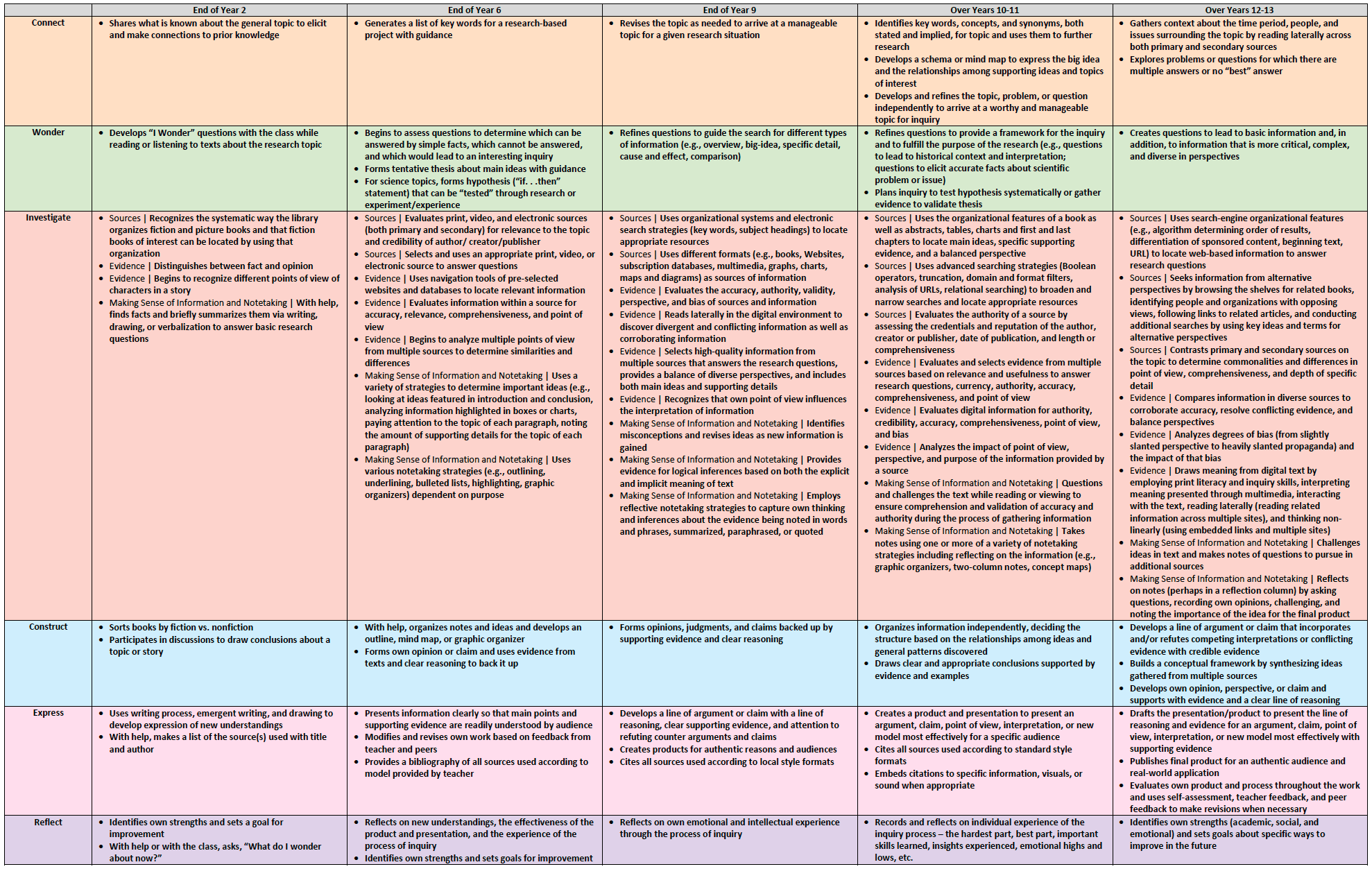
Our curriculum map revealed a unit in Science on properties of materials, with the following learning objectives:
- Students should know that air is a good insulator, and know some everyday examples where trapped air is used for insulation
- Students should know how to compare different temperatures by feel and thermometer, know how to read a thermometer scale, including values below 0 °C, and know about the boiling point and freezing point of water and the temperature of a healthy human
This brought to mind the Year 7 Science inquiry into heating and cooling that we had collaborated on with Chris Foster at Oakham School (see here and next post below), and I wondered whether we might be able to adapt this for Year 6.
The curriculum map also revealed units in Art & Design, English, ICT and Mathematics that might be meaningfully aligned and connected with this inquiry originating in Science. I have now met individually with all relevant colleagues, and have begun to outline and detail this ambitious year-long interdisciplinary inquiry, which is already underway, ahead of a joint meeting on Thursday afternoon. I share a broad overview of the inquiry below and will update as I go.
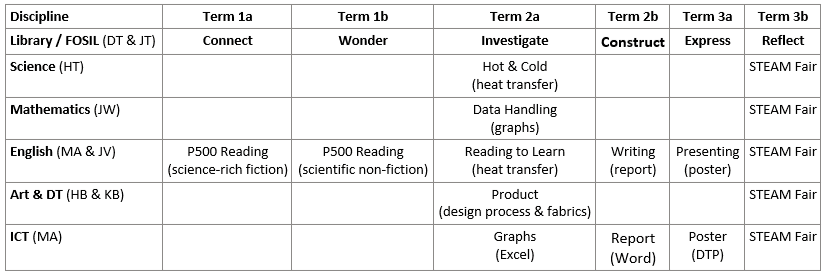
* A Signature Work is an age-appropriate inquiry-based exploration of a significant issue, problem or question that the individual student identifies and defines, that is conducted over the course of at least one semester, and that involves substantial writing and reflection – based on the AAC&U‘s definition in What Liberal Education Looks Like: What It Is, Who It’s For and Where It Happens (2020). Signature Work is a defining feature of a liberal education.
7th October 2022 at 7:15 pm #79150I have just remembered that the “Year 7 Science inquiry into heating and cooling that we had collaborated on with Chris Foster at Oakham School” referred to in the post immediately above, not only links to Chris’ topic here, but also to the following article that we collaborated with Elizabeth Hutchinson on for Teaching Times (25 April 2021): Year 7 Science Project FOSILised.
15th January 2023 at 11:35 am #79532The second, pivotal phase of this ambitious interdisciplinary inquiry is well underway, and Jenny will reflect on our progress in due course.
We have, however, added the Cool Water Experimental Journal to Resources (see below), and I also include here an overview of the Science investigation and an overview of this phase of the inquiry.
Science Investigation Overview
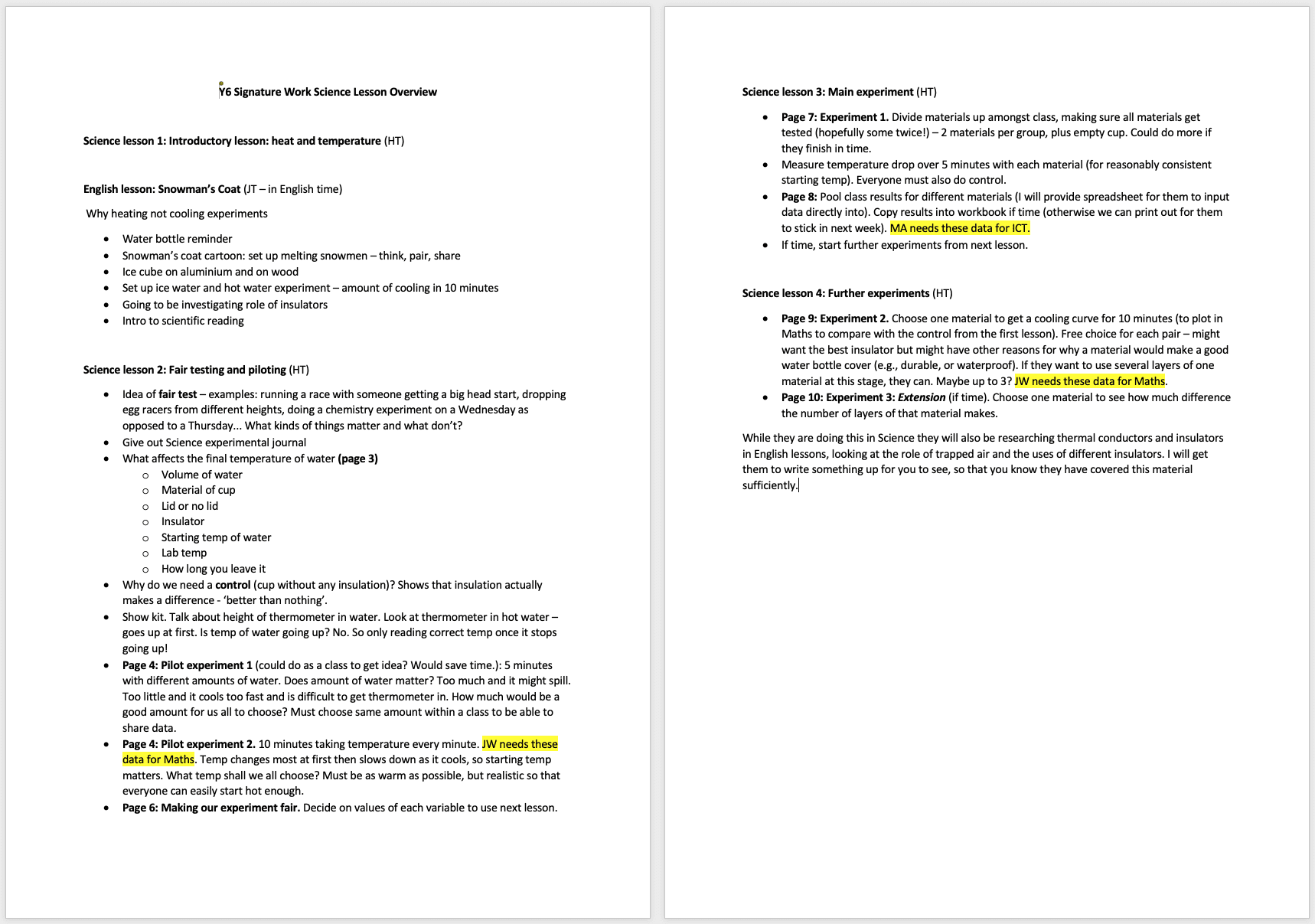
Science Investigation Experimental Journal
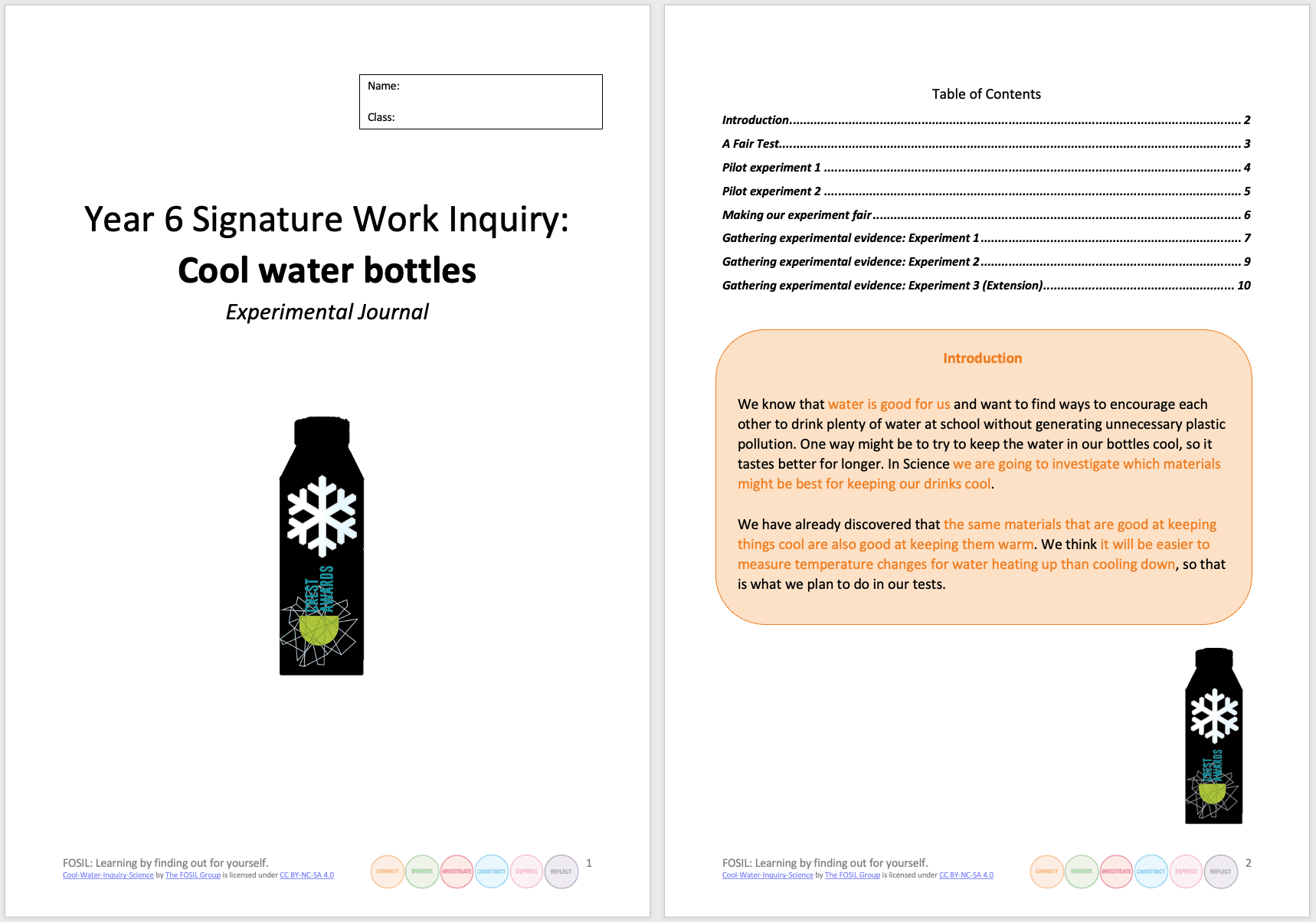
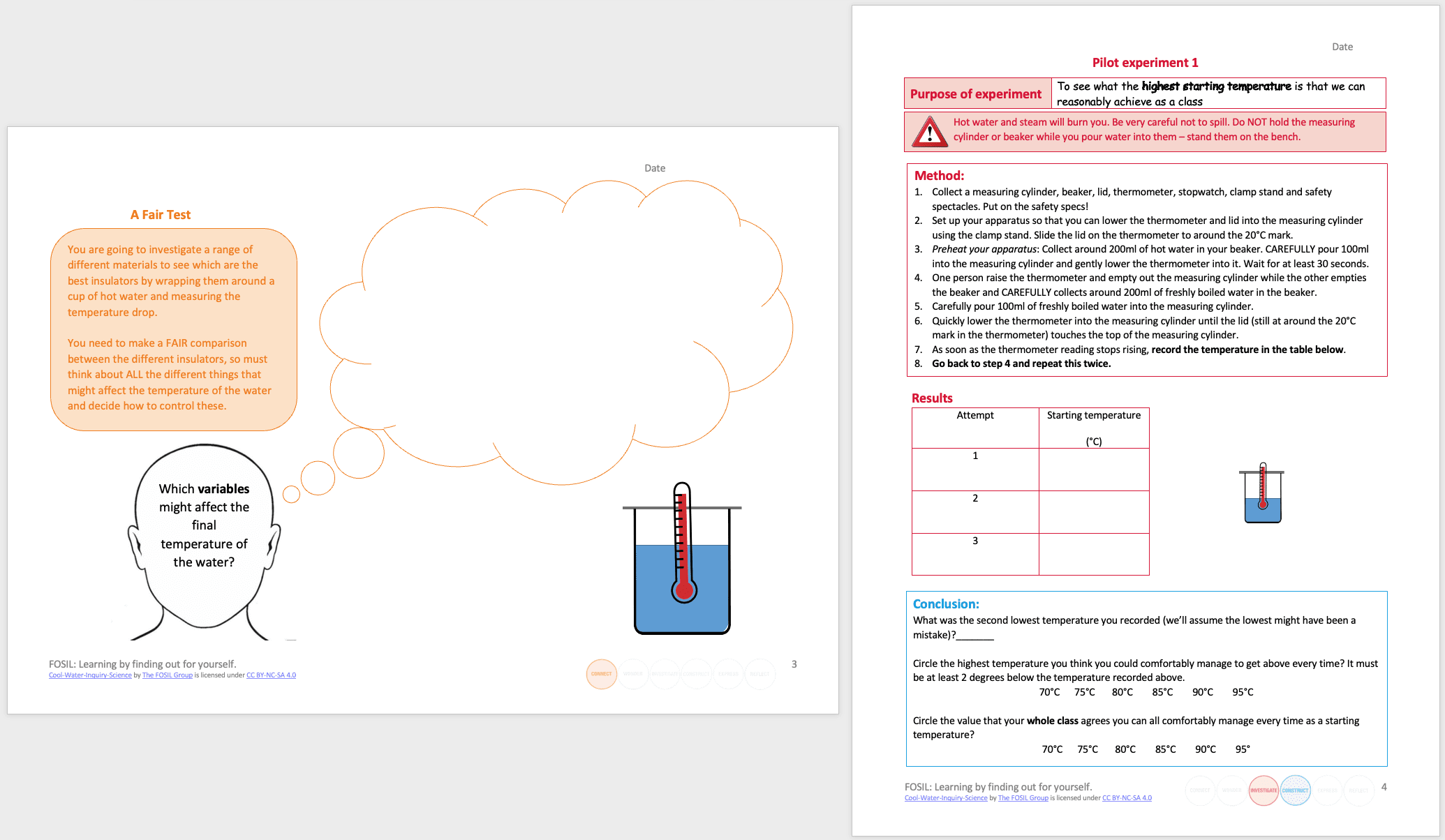
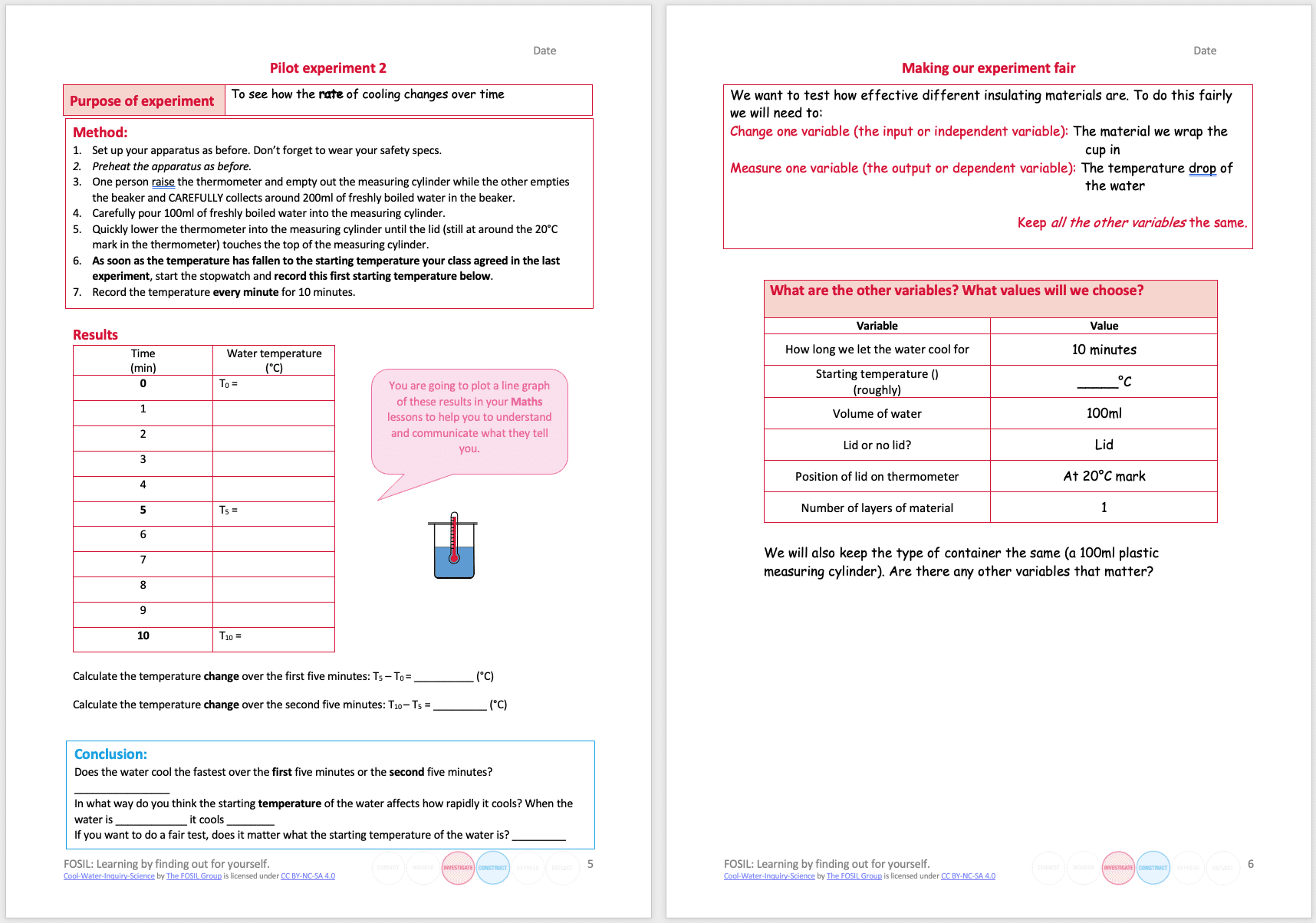
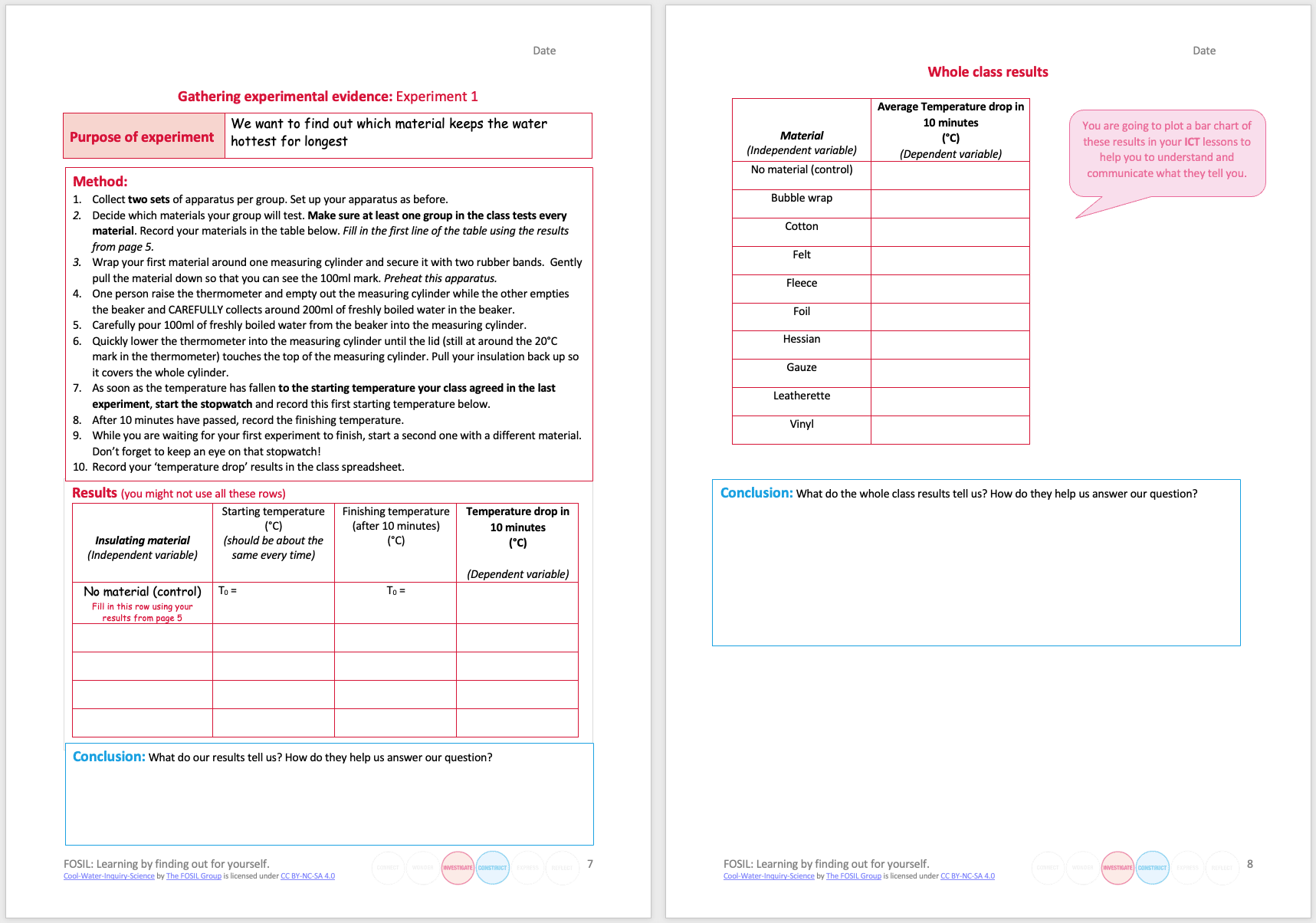
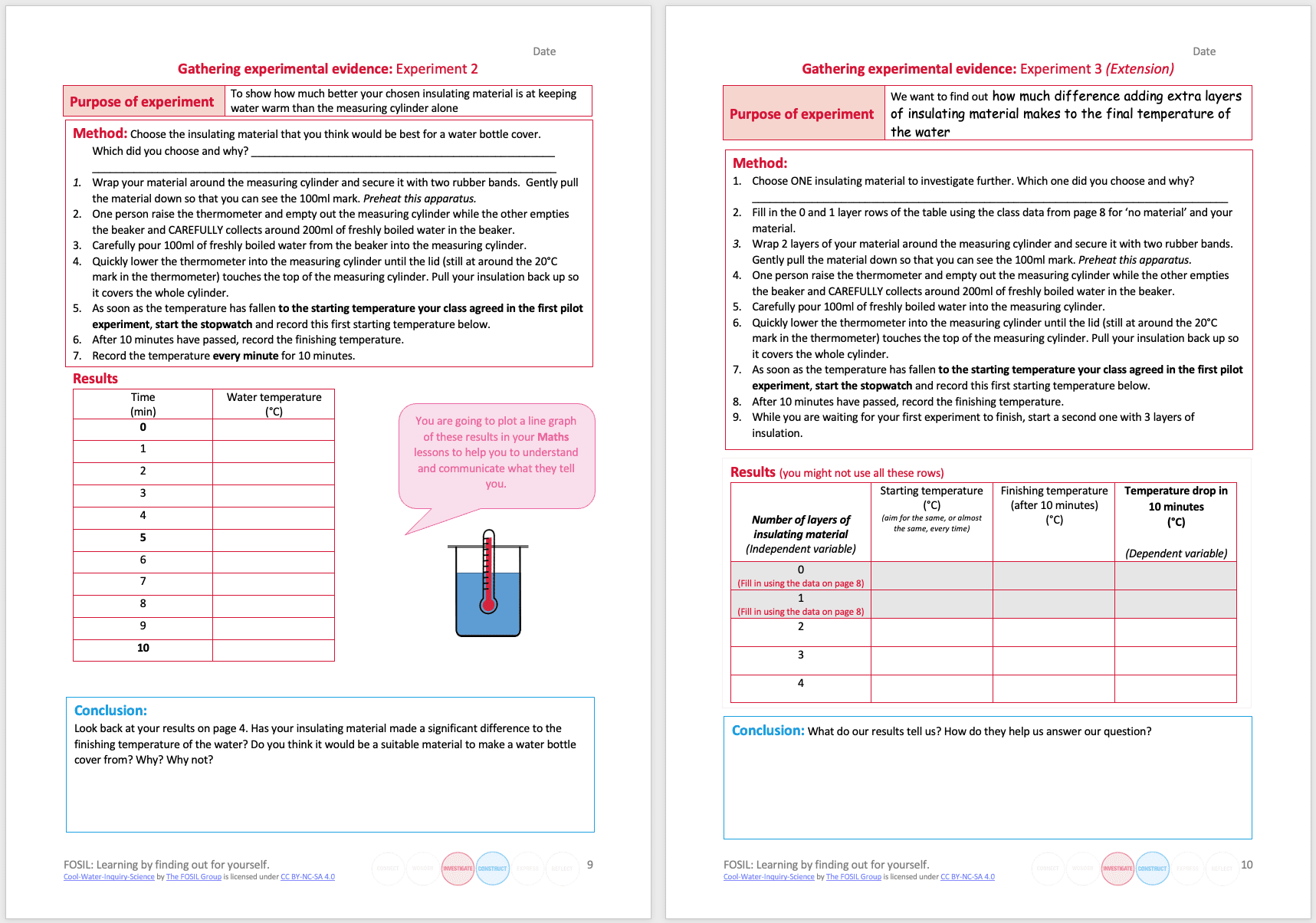
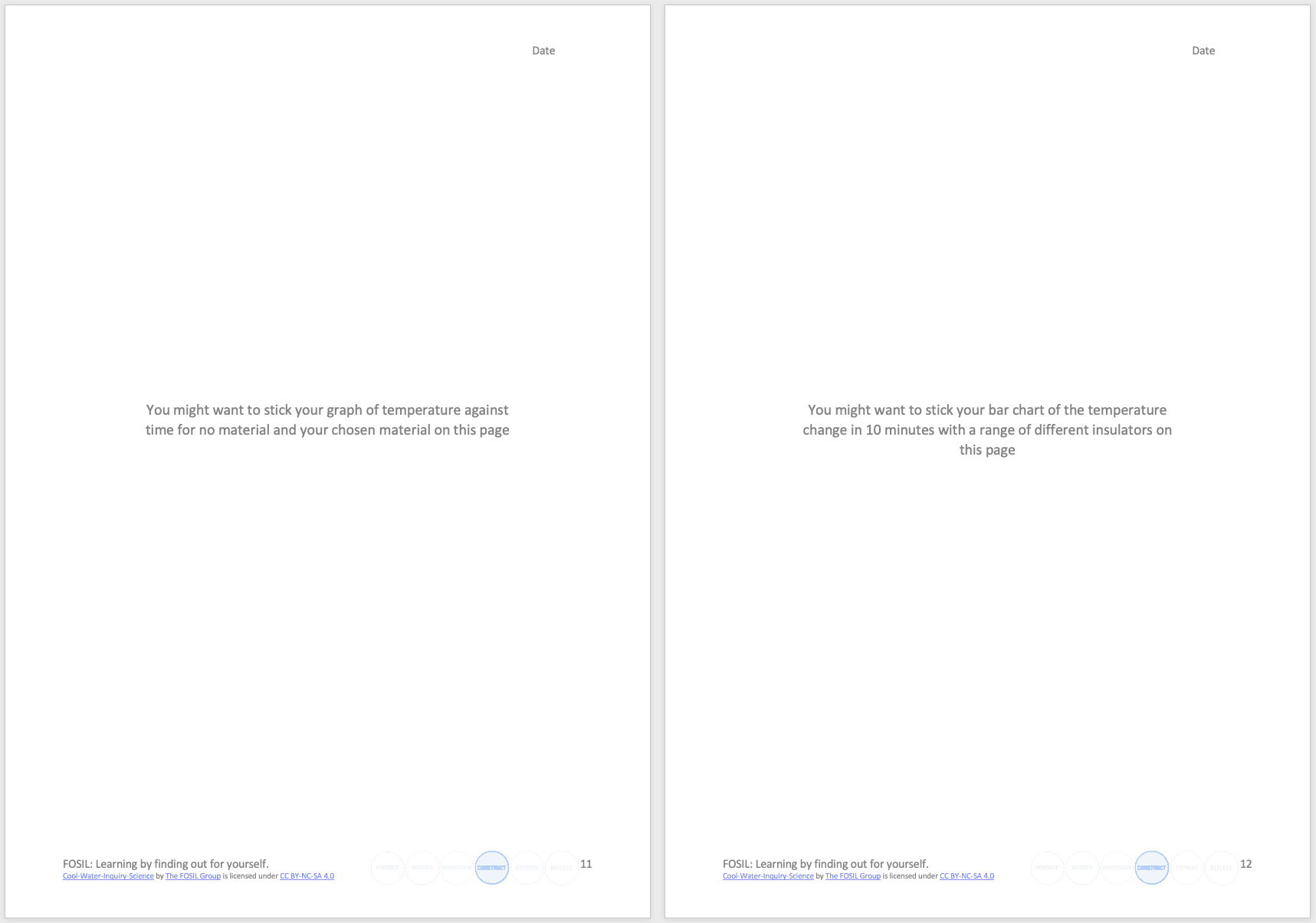
Cool Water Inquiry Overview
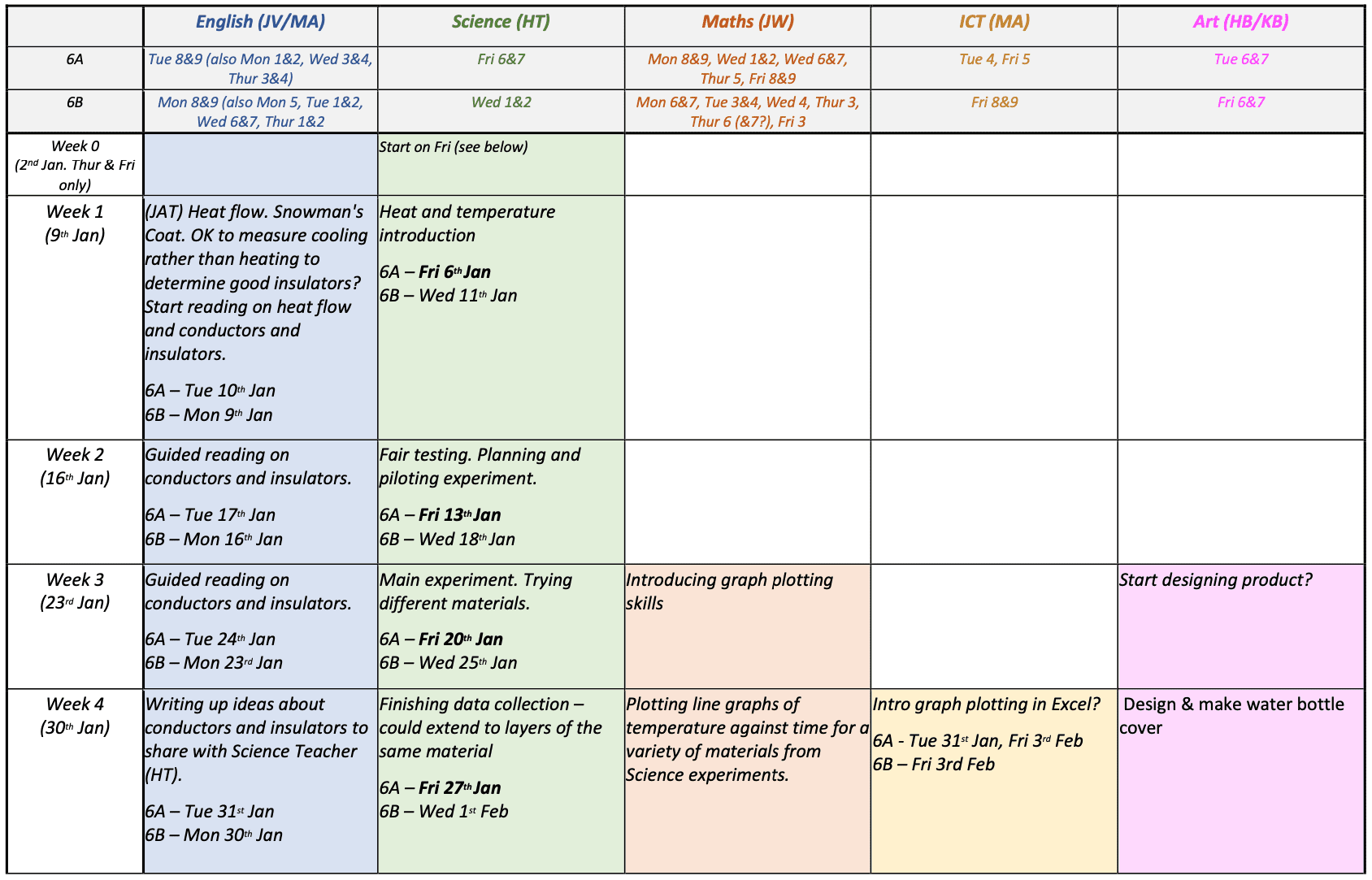
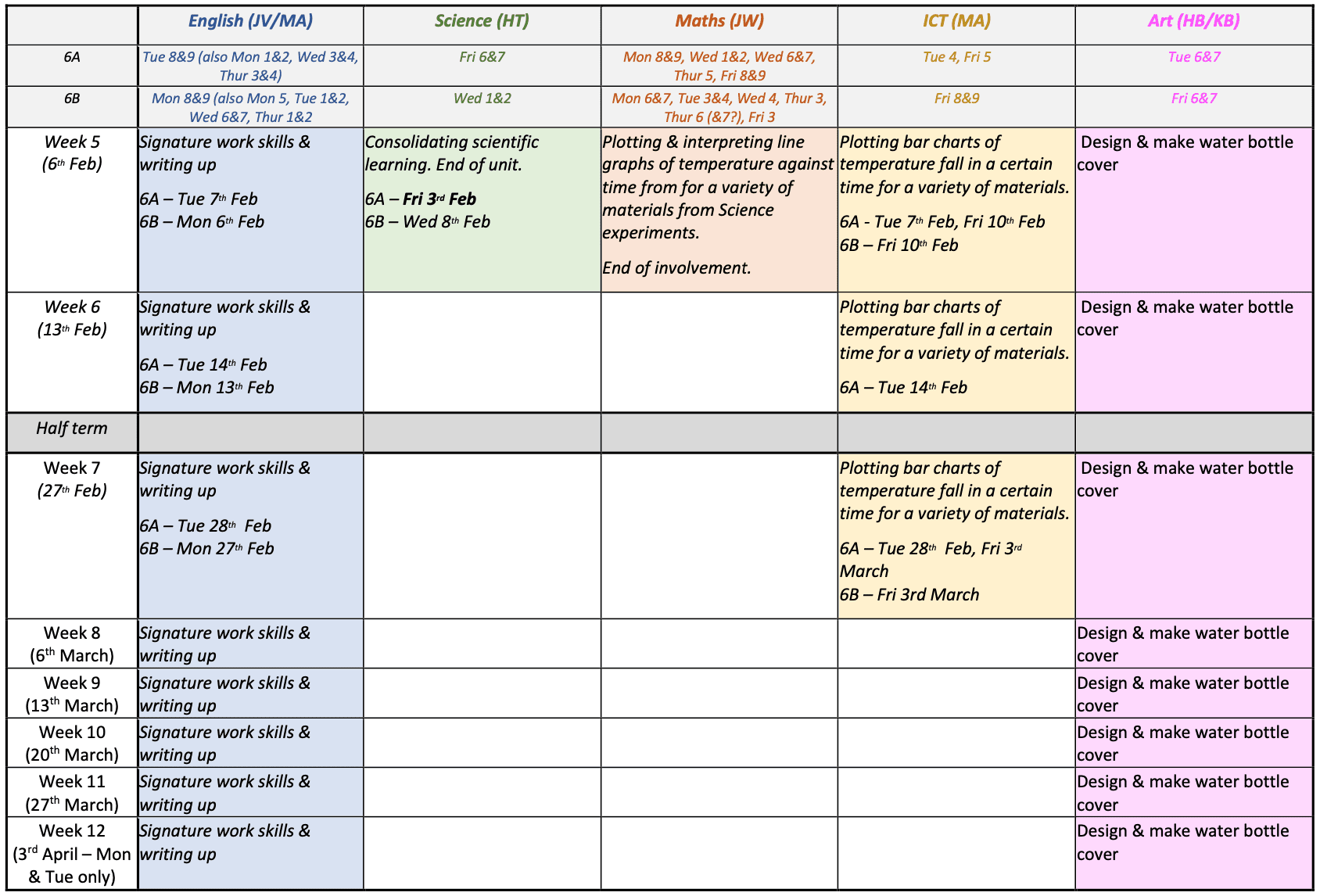 28th February 2023 at 10:48 pm #79703
28th February 2023 at 10:48 pm #79703We’re now six weeks into the intensive interdisciplinary phase of this inquiry and it has been both exhausting and inspiring. I am very grateful that the most complex phase of the inquiry is now almost complete! As a Librarian a key part of my role has been to tie the different strands of the inquiry together, making it as easy as possible for the subject specialists to work together and giving the students a coherent experience. I was really grateful for how open all the teachers were to inviting me into their lessons, so I had a student’s eye view of how the inquiry was working. Making the time to be in all these different lessons has been a real challenge and I am also grateful to Darryl for picking up some of my Year 8 reading lessons (among other things) to make this possible.
So what was I doing on a practical level?
- At the end of last term, I ran a whole school survey about water bottle use and collated the results for the Art and DT teachers to use with their classes. Next year we hope that maybe groups of students will be able to run and interpret a similar survey themselves through their Maths lessons.
- From the start of this term, I supported the Science teacher in most of his lessons – and just to be clear, he is a brilliant teacher who would usually take his groups alone quite happily, but it is often helpful to have an extra pair of hands and eyes during a practical inquiry where students are required to be more independent. Also, this was particularly important in this first year because I designed the Experimental Journal and so had a very clear idea of how it was intended to be used and how to get the best out of it. We will see next year what level of support might be helpful. I also prepared and maintained all of the equipment for the lessons and have drawn up kit lists for next year.
- I made photocopies of students’ Science results where necessary and shared them with the Maths and ICT teachers so that they could start their parts of the inquiry while the journals were still in use in the Science lessons.
- The Maths teacher invited me into one of her lessons so that I could talk with the students as they worked on their inquiry graphs. I made photocopies of the students’ graphs from their Maths books to stick into their Experimental Journals – next year we might try plotting these on separate sheets right from the start, as that will save this job!
- The Art and DT teachers invited me into their lessons to help support the class with making their water bottle covers, and take photos of the finished products. These lessons involved the teachers working with individuals on the sewing machine so it was helpful to them to have some support with the rest of the class, and so interesting for me to talk to the students as they made their products.
- I led (and am still leading) a double inquiry lesson every week for each class (as part of the English timetable) with the English teachers shadowing and supporting me. The aim here is that after this year, once the course is fully developed, this role will switch and next year the English teachers will take this lesson (using the resources I develop this year) and I will support them. This lesson ties all the other strands together and will ultimately lead to the CREST award submissions.
- Every week (during the phase where something was happening across a number of different subjects so all the teachers had to know what everyone else was doing) I sent a summary update email to all staff involved. I also took photos in different lessons and wrote articles for the weekly school newsletter to keep parents informed (advocacy matters!). You can see a copy of some of these articles here, although unfortunately I have had to remove names and photographs.
While it would certainly be possible to run an inquiry of some sort without this level of hands-on involvement, I don’t think it could be as coherent (certainly in this first year when everything is new), particularly as we are spanning not only different subject boundaries and teachers, but also Primary and Secondary school teaching colleagues (as some of these teachers are Primary specialists, while others do the bulk of their teaching in the Secondary phase of our school). I was also keen to make it as positive experience as possible for the staff involved to encourage participation in future inquiries.
1st March 2023 at 12:28 am #79706Reflections on the Science lessons (Darryl has already linked to the Cool Water Experimental Journal in a previous post).
When I have done this experiment before (also as part of the CREST award, way back when I was a Science teacher), I have found it can become a bit chaotic with students being unsure what to do and finding it very challenging to plan genuinely fair and meaningful experiments. In the past, after a few lessons of playing around with the equipment, they will all have gathered some data, but for some groups it can be debatable how useful this data is. They will often have some idea of what fair testing means, but find it hard to achieve in practice. Particularly with time constraints. Indeed, with my Science technician hat on, I had to conduct quite a number of different trials with lots of different kit to come up with a procedure and set of apparatus that would produce reasonably different results with a range of different insulators over a fairly short time period (in this case, around a 16C temperature drop over about 10 minutes from a starting temperature of around 80C). The students would never have had the time to do this before starting their experiments.*
Like any form of inquiry, Scientific inquiry skills need to be purposefully taught and practised. If practical work is usually ‘recipe style’ and opportunities for genuine inquiry or even some level of decision making are rare (as is often the case), then you cannot just expect students to intuitively know how to do it. We decided to focus on the idea of fair testing, and stepped students through a controlled inquiry to determine which insulators were the most effective. The group talked together about how to make the experiments fair, and how to make sure that they were all doing them the same way so that they could pool their results at the end. Although the method was quite tightly controlled, the emphasis was on students understanding why it was important to conduct the experiment in this way.
In the back of my mind I have Daniel Callison’s book on ‘Controlled, guided, modelled and free’ inquiry and Trev MacKenzie and Rebecca Bathurst-Hunt’s sketch on types of student inquiry. Inquiries can be conducted at many different levels and we need to choose a level appropriate to the skills and experience of the particular students – with the aim that we start off heavily scaffolded and that scaffolding gently drops away with age and experience.
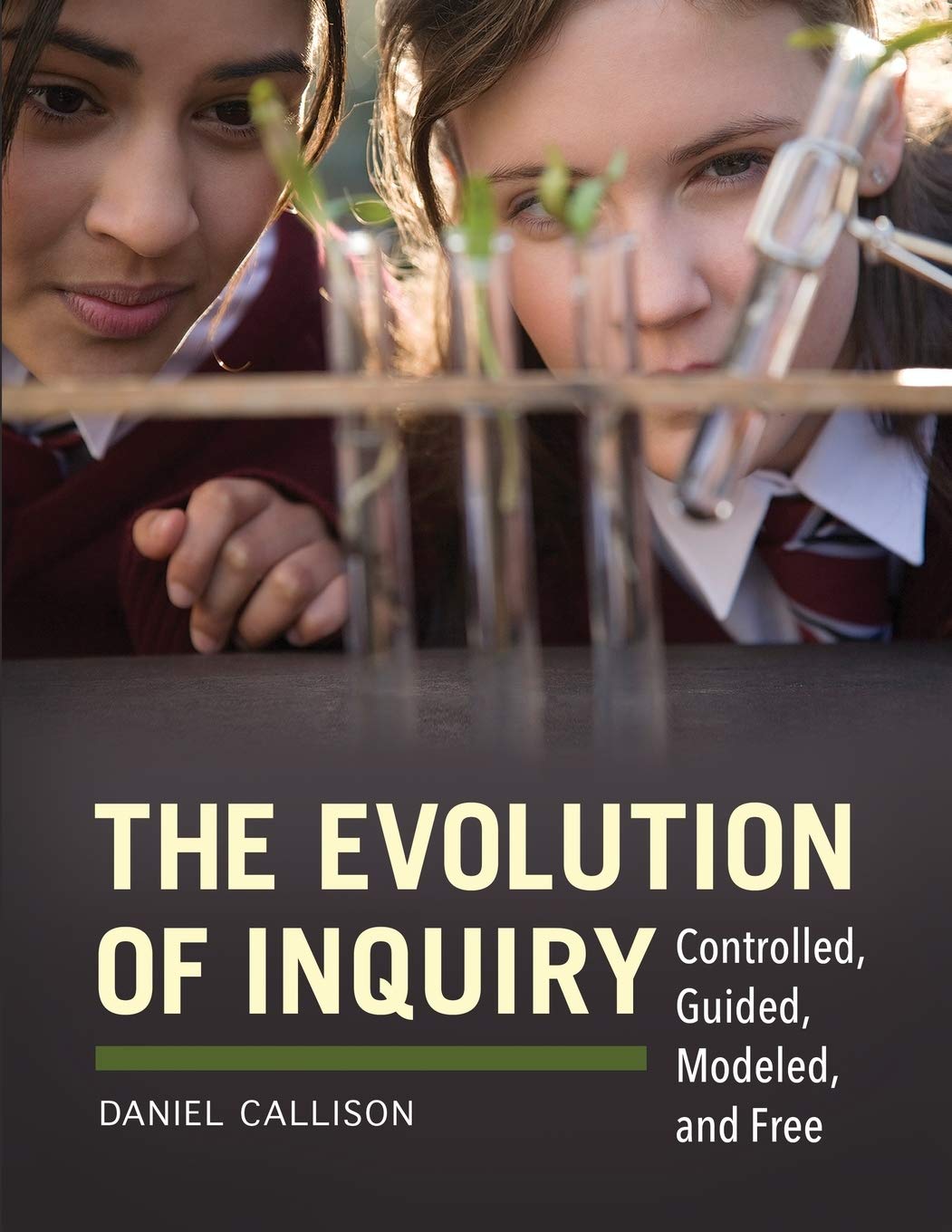
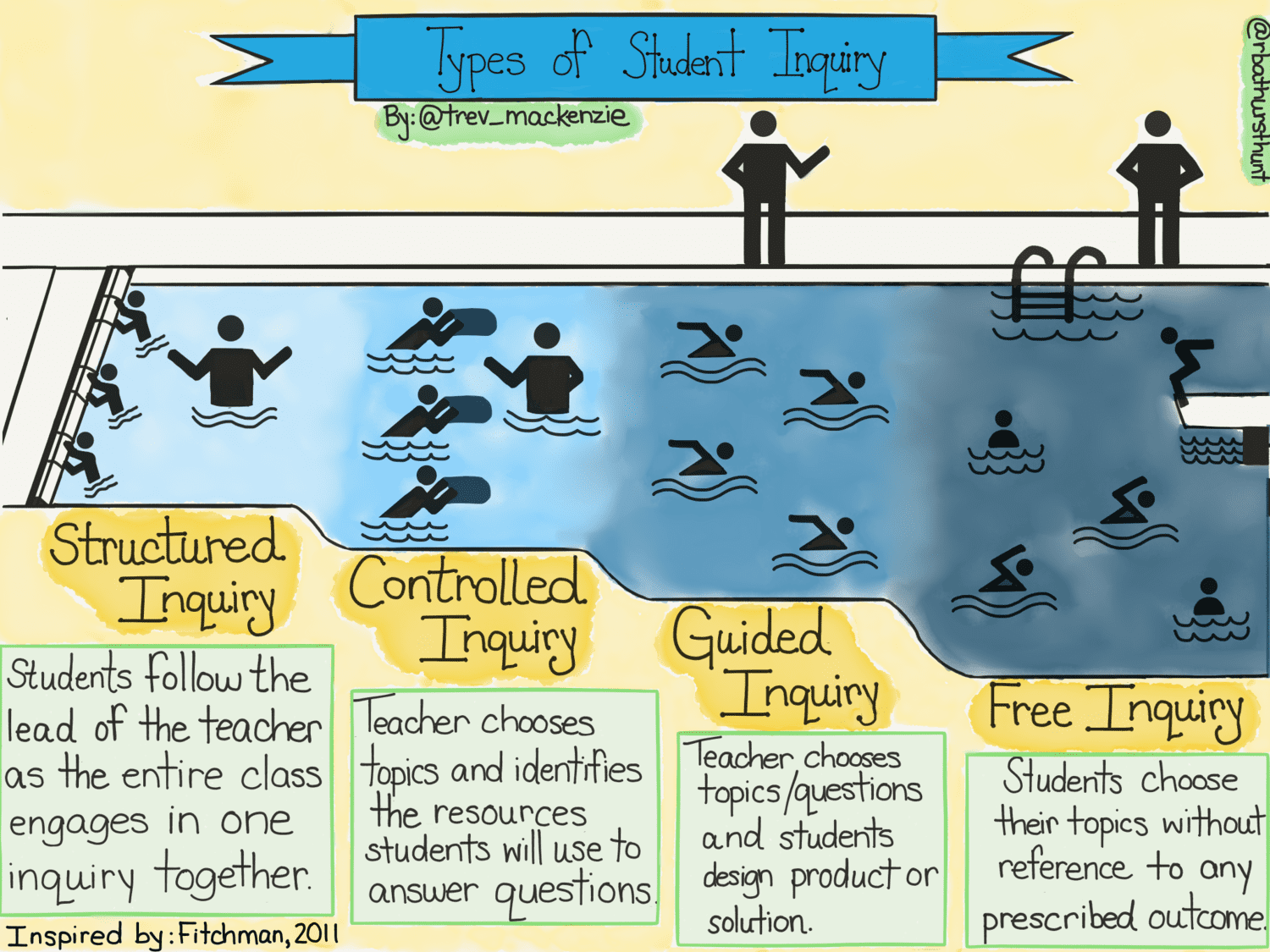
A key component of this part of the inquiry was time. Because I was teaching some of the heat transfer theory through the English lessons, and graphs would be plotted in Maths and ICT, this freed up the Science teacher to really focus on the practical. He commented afterwards how valuable it was to spend four lessons (around 1 hour each) on the same experiment because this is not something they would normally be able to do, and how much the students’ experimental technique and understanding improved as they had the opportunity to learn from their mistakes. The students were excited by the experiments (and the tie-in with the water bottle covers that they were going to make) and enjoyed being able to return to the same apparatus over a number of weeks and improve their technique.
The downside of this slightly more controlled approach is that it does reduce student autonomy somewhat, so in order to meet the CREST criteria on decision-making and planning I felt we needed to add another strand to the inquiry – over the next few weeks the class will be planning a campaign to reduce the use of single-use plastics in the school (linked to making their reusable water bottles more attractive to use by making the covers). They will have the opportunity to drive and plan this themselves (with some guidance, of course!), which will help them to meet these criteria for the CREST award.
[*If you want to know, a 100ml plastic measuring cylinder filled with 100ml of freshly boiled water and a thermometer clamped and pushed through (at about the 20C mark) a disposable cup lid just touching the top of the cylinder works really well. If you also prewarm the apparatus you can get perfectly reproducible results – as evidenced by that fact that several groups in one class managed to get identical results. They were so excited to feel like real scientists! You can then precut equally sized rectangles of different materials to wrap around the whole height of the cylinder and secure at top and bottom with rubber bands. In my trials I found that the small plastic cups, and even glass beakers, which are commonly used for this experiment instead of the cylinders were too affected by heat loss through their bottoms and didn’t have enough surface area covered by the insulating material to be particularly discriminating between different materials.]
1st March 2023 at 1:18 am #79718Reflections on the English lessons
The key skills we were working on in English were reading for information, and reflection. From a Science perspective we wanted students to gain an understanding of heat transfer and use this to help them to explain what kinds of materials would be best to keep their water bottles cool.
Following an introductory lesson on The Snowman’s Coat (a famous Science concept cartoon), I gave the classes two ‘guided reading’ comprehension exercises, which I printed on A3. I have put images here but have deliberately blurred the textbook pages for copyright reasons. I used ‘Investigate red’ for questions where the answers could be found in the text and ‘Construct blue’ for questions where students would need to think about what they had read and construct their own understanding. I told the students this explicitly at the start.
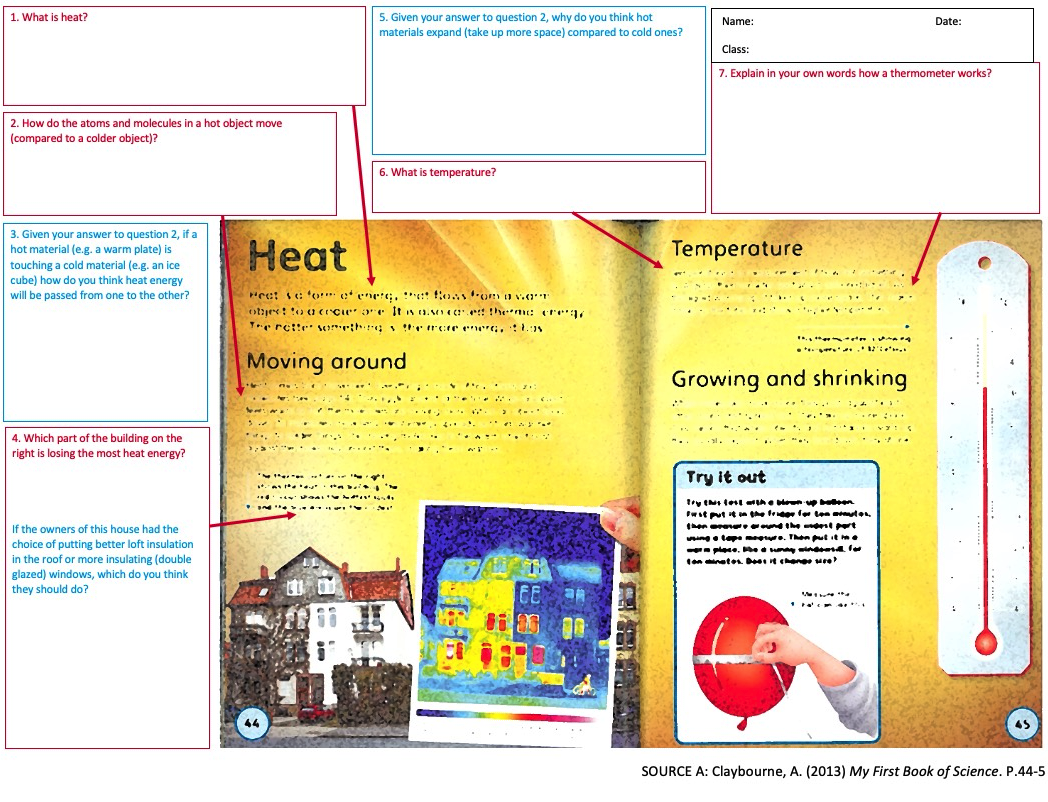
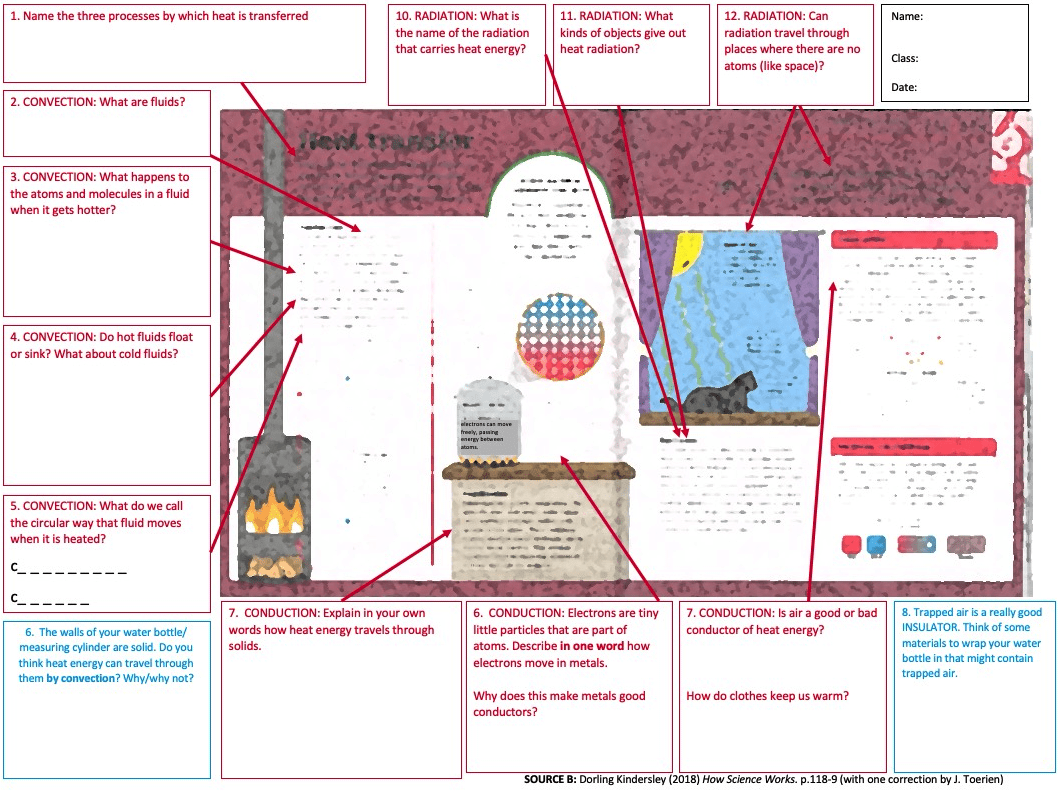
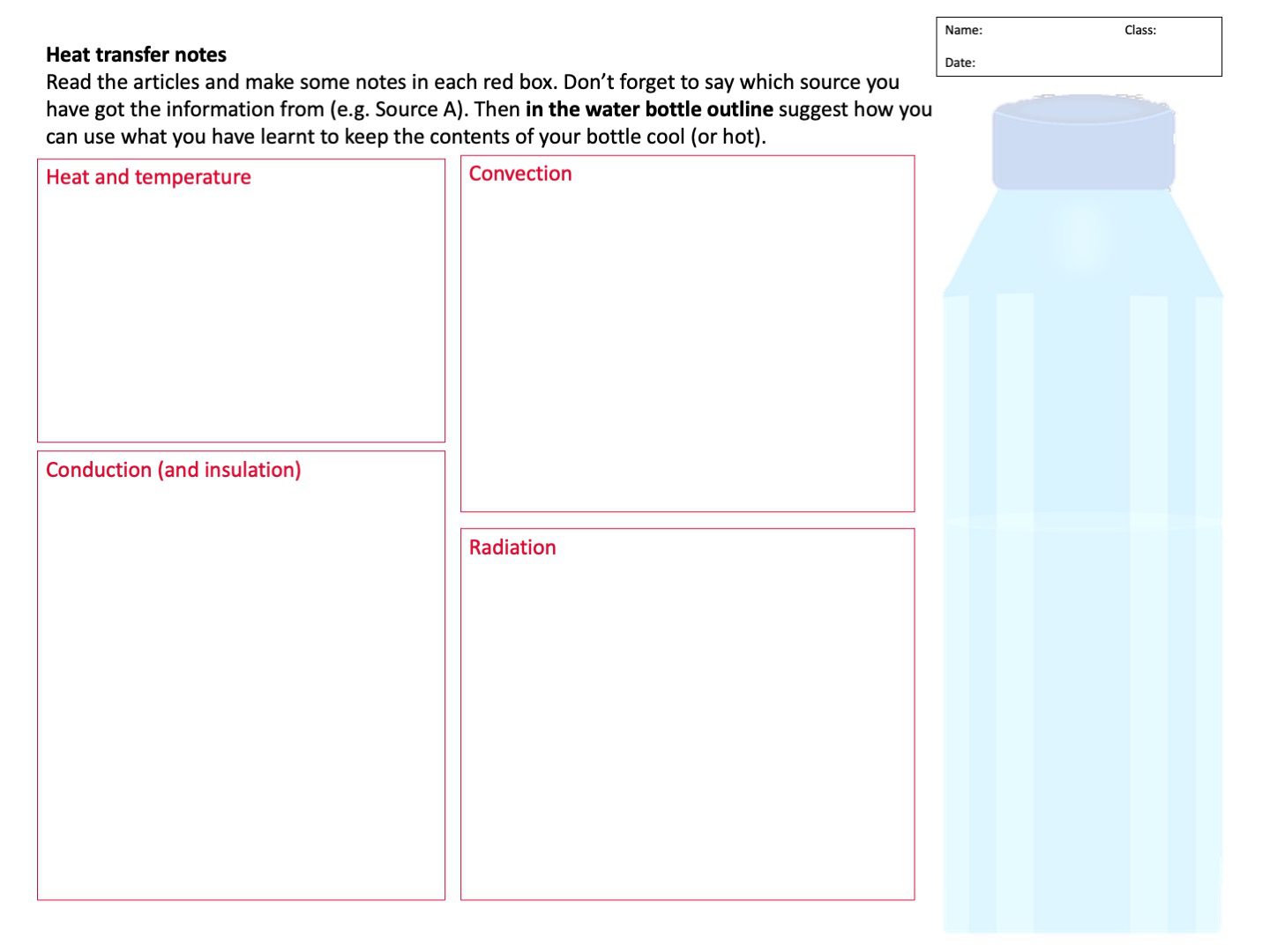 A key component of this was to give students plenty of time to read and think – and not to answer their questions directly immediately if they asked for help, but to guide them back to the places in the text where they could find the answer. We have noticed that lessons can be quite bitty, moving from one task to another every 10 minutes or so. While in general this can be good teaching practice to keep a group engaged, it is impossible to really engage with reading a source carefully in short time periods like that. We spent the whole (hour) lesson on this task, with breaks every now and then to discuss common misconceptions. This task modelled how to find answers to questions in a complex scientific text by showing them with arrows where to look. Then the next lesson I gave them a choice of a range of pages from different books without any guided reading questions and asked them to make notes on the different types of heat transfer using this structured graphic organiser (see right, with editable PPT copy here).
A key component of this was to give students plenty of time to read and think – and not to answer their questions directly immediately if they asked for help, but to guide them back to the places in the text where they could find the answer. We have noticed that lessons can be quite bitty, moving from one task to another every 10 minutes or so. While in general this can be good teaching practice to keep a group engaged, it is impossible to really engage with reading a source carefully in short time periods like that. We spent the whole (hour) lesson on this task, with breaks every now and then to discuss common misconceptions. This task modelled how to find answers to questions in a complex scientific text by showing them with arrows where to look. Then the next lesson I gave them a choice of a range of pages from different books without any guided reading questions and asked them to make notes on the different types of heat transfer using this structured graphic organiser (see right, with editable PPT copy here).In the (‘Construct blue’) water bottle outline, I asked them to use that knowledge to suggest what types of materials would be good at keeping their water bottles cold. While they found this challenging, many exhibited a level of understanding beyond what would usually be expected in the Year 6 curriculum in their notes.
Heat transfer poems!
In their other English lessons in the week they were studying poetry writing, so one of the English teachers suggested writing poems about heat transfer. This was a super cross-over activity – and interestingly of the type that might be criticised (perhaps justifiably) by inquiry opponents as a waste of time if it had happened in the Science lessons. In English, they were being taught how to write poetry anyway and needed a subject. Picking heat transfer was very natural because it was something they knew a lot about. I produced this stimulus sheet (plus a rhyming dictionary) and the English teachers ran the lesson.
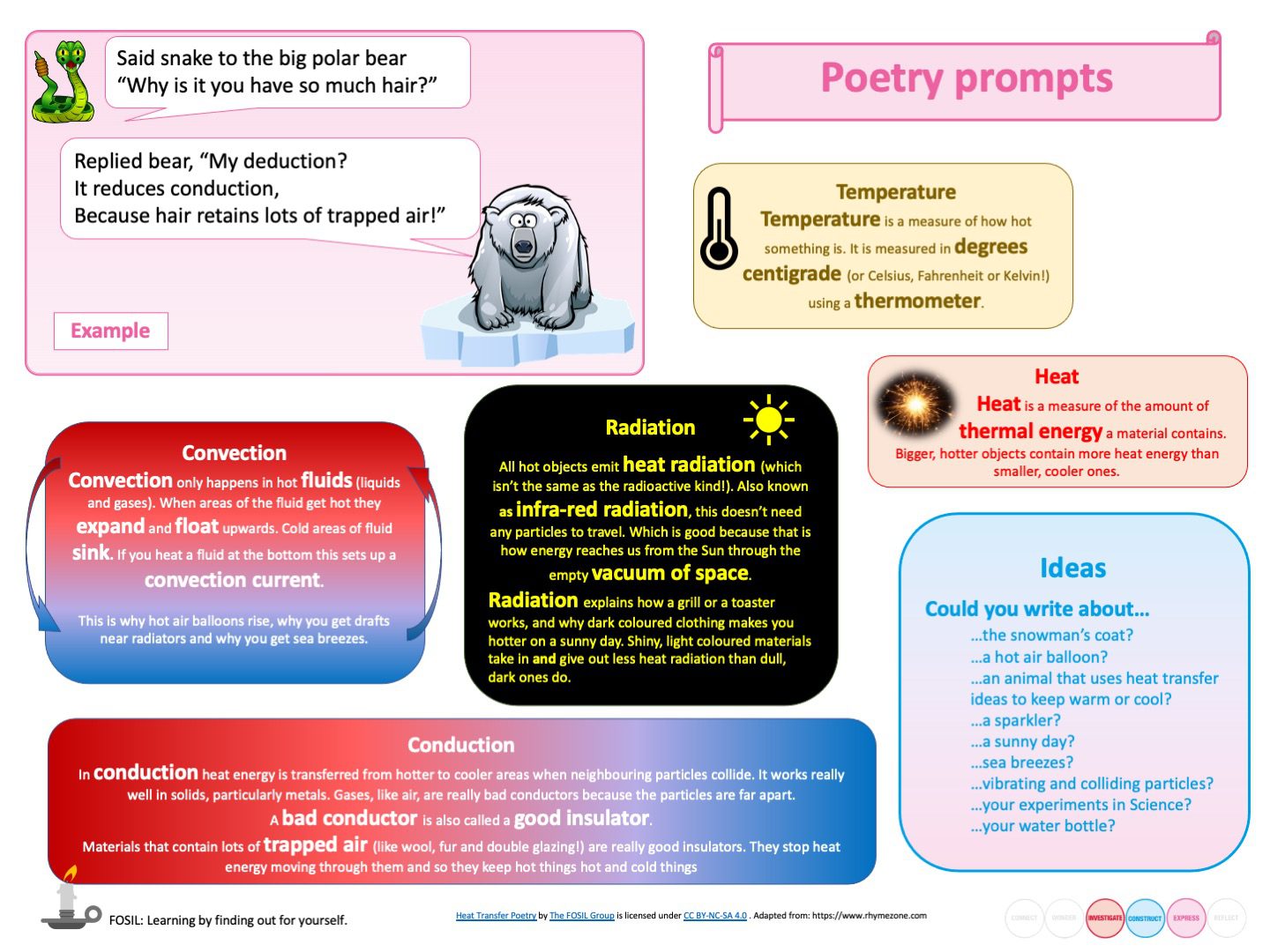

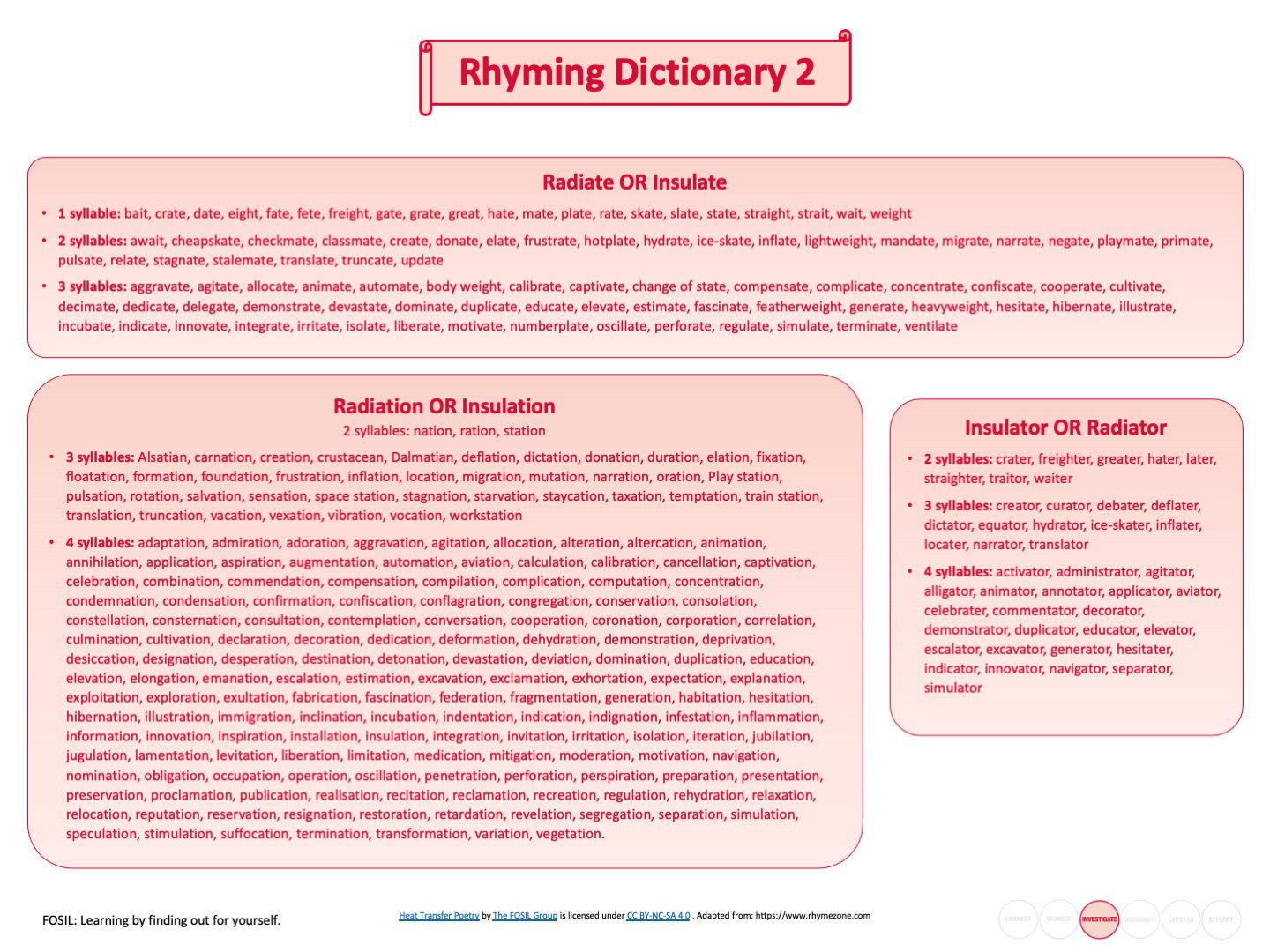
Interestingly, this turned out also to be a very productive activity for the Science as well as the English, because in order to write a good, Scientific poem you need to really understand the subject matter. Many of Year 6 produced some super concrete poems and limericks on this topic.
1st March 2023 at 1:40 am #79728Art & DT
Art and DT has been one of the highlights of the inquiry for me – the students have produced a wide range of beautiful covers and are so proud of what they have made. The Art teacher sourced some thin neoprene for the project and, because it is stretchy it grips the bottle really well making the covers practical and usable – a really authentic product. I will try to get permission to post some pictures of the finished articles at some point. I made this design brief sheet, which will form part of the CREST submission, to help them to get started and attended the lessons regularly to support the teacher (Word version, PDF version).
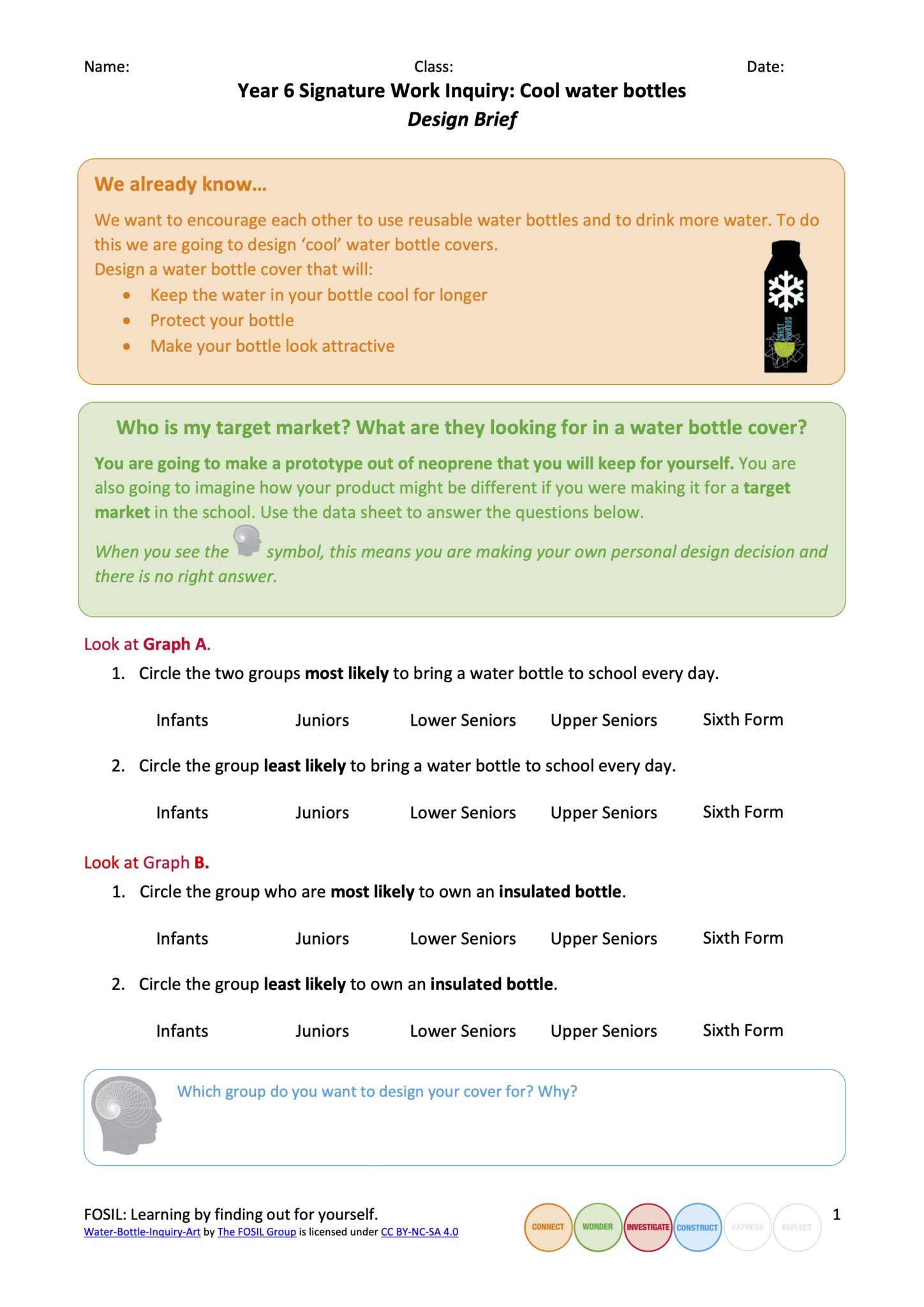
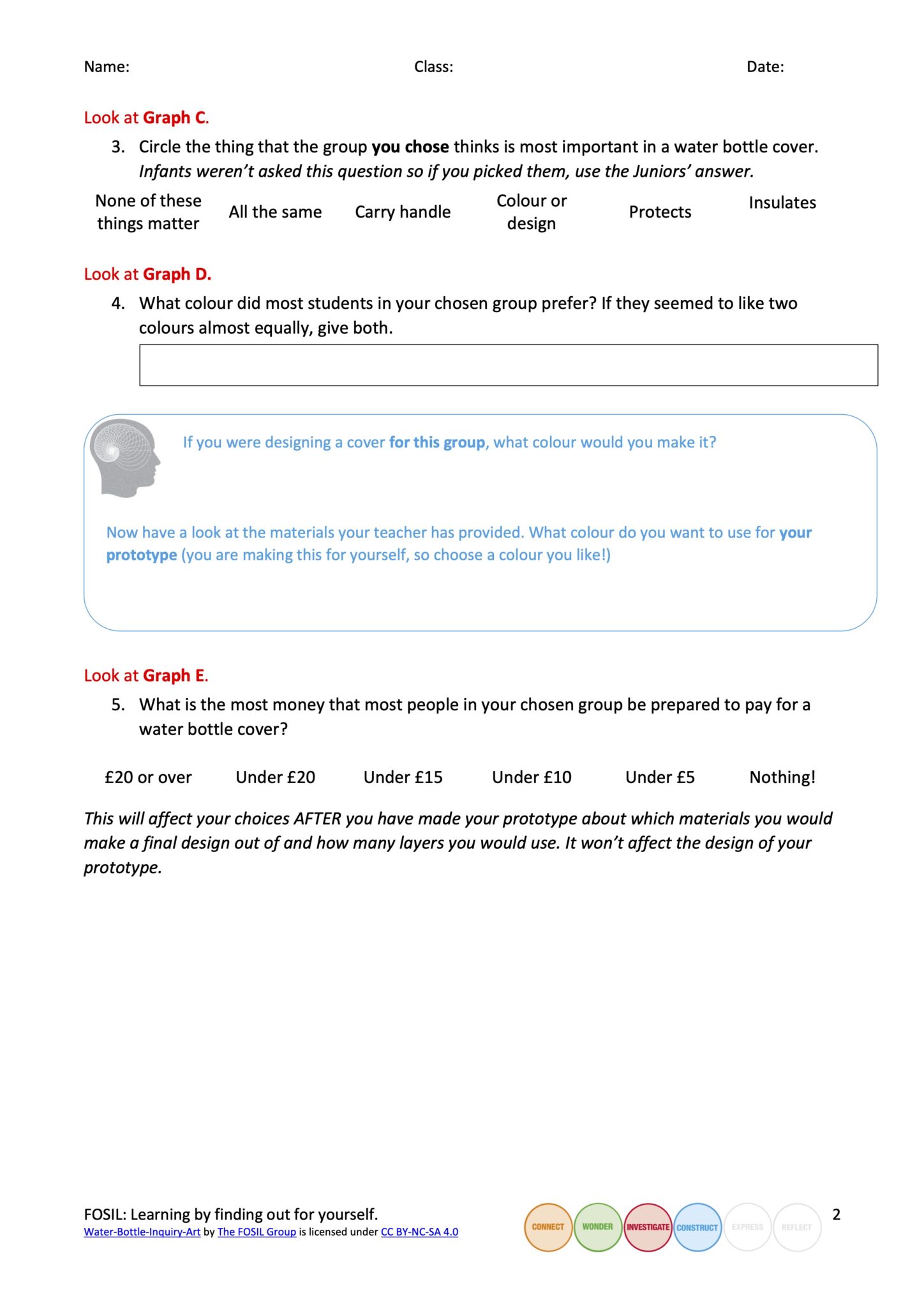
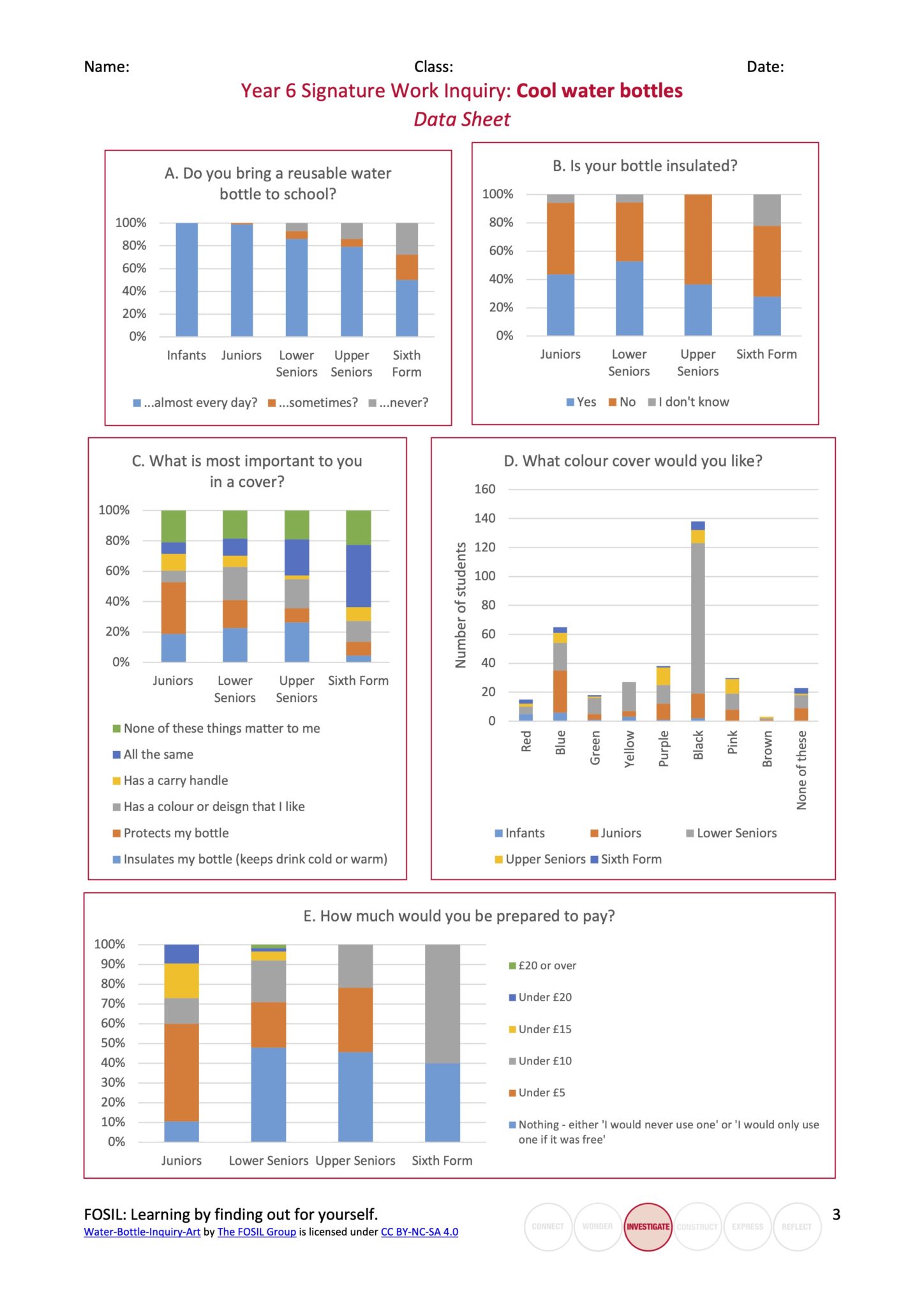
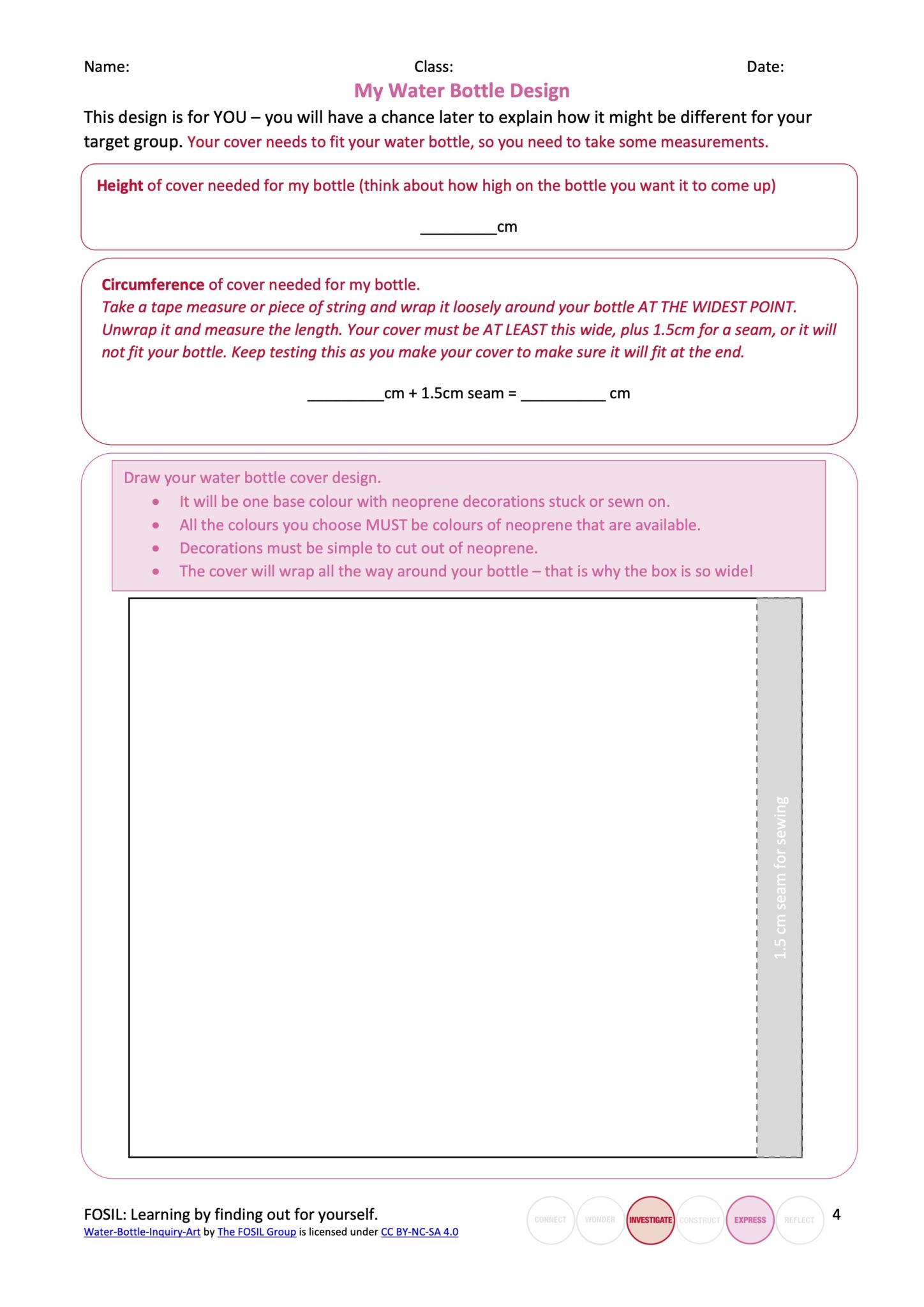
The teacher is so pleased with their work that she intends to enter it in the Guernsey Eisteddfod, and the covers will also feature in our Signature Work exhibition evening next term. The students are just very excited about being able to use the covers they have made on their own water bottles!
1st March 2023 at 1:59 am #79730Reflecting
We spent some time before half term reflecting on progress. This is another important element of the CREST Award – and it was great to be forced to make time to do this properly. Reflection can often be rushed at the end of a project, whereas here we had the opportunity to reflect at a mid-stage, both on the product and the learning. One of the English teachers commented to me how valuable it was to have spent a whole lesson reflecting on the half-term’s work, as that was not something students usually had much time to do, particularly in such a structured way.
I made a graphic organiser to encourage them to consider how they overcame problems that they came across, what decisions they had made, what they had learnt and what they would change. You can download an editable (PPT) copy here. Note that the pale grey numbers refer to CREST Award criteria.
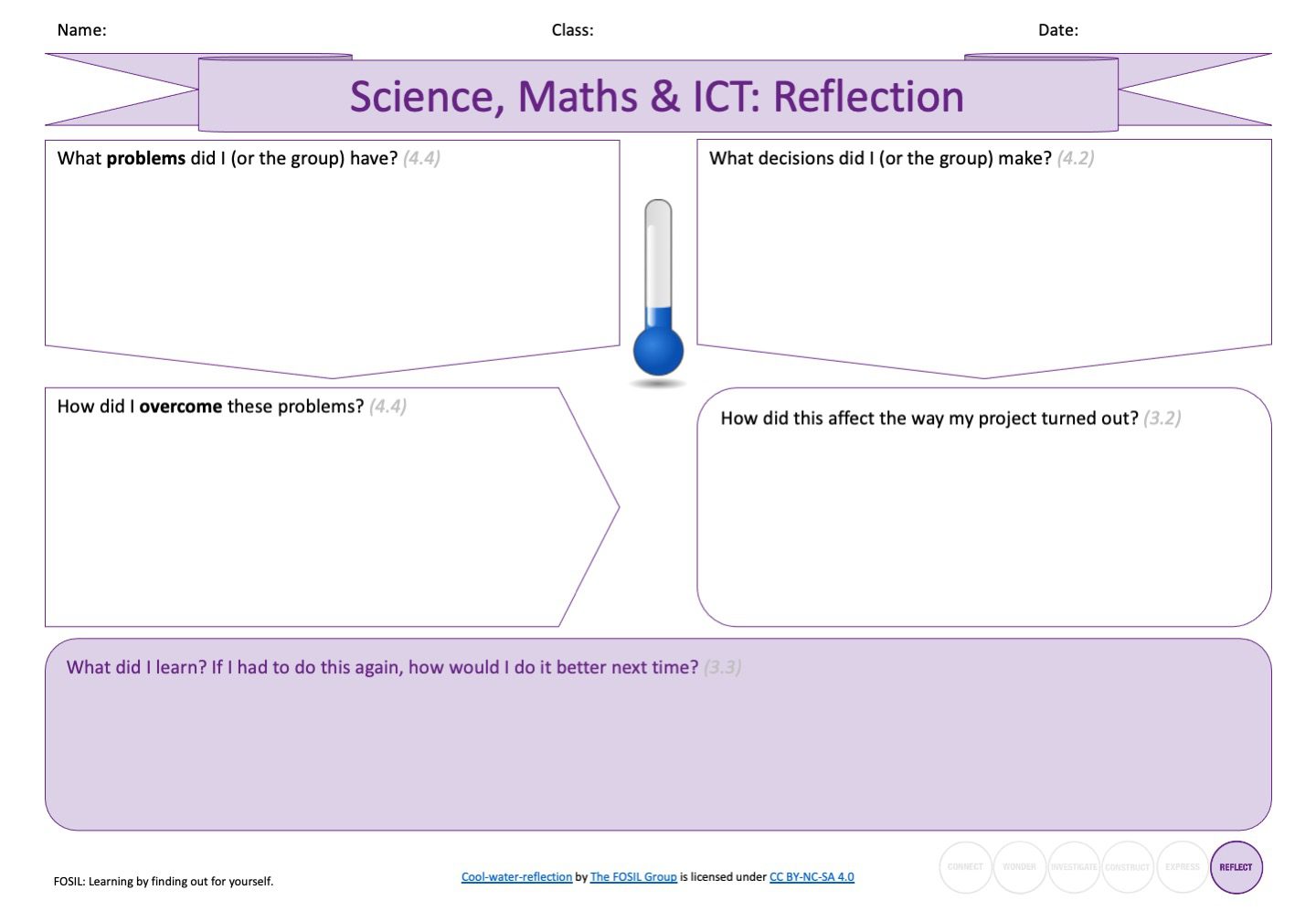
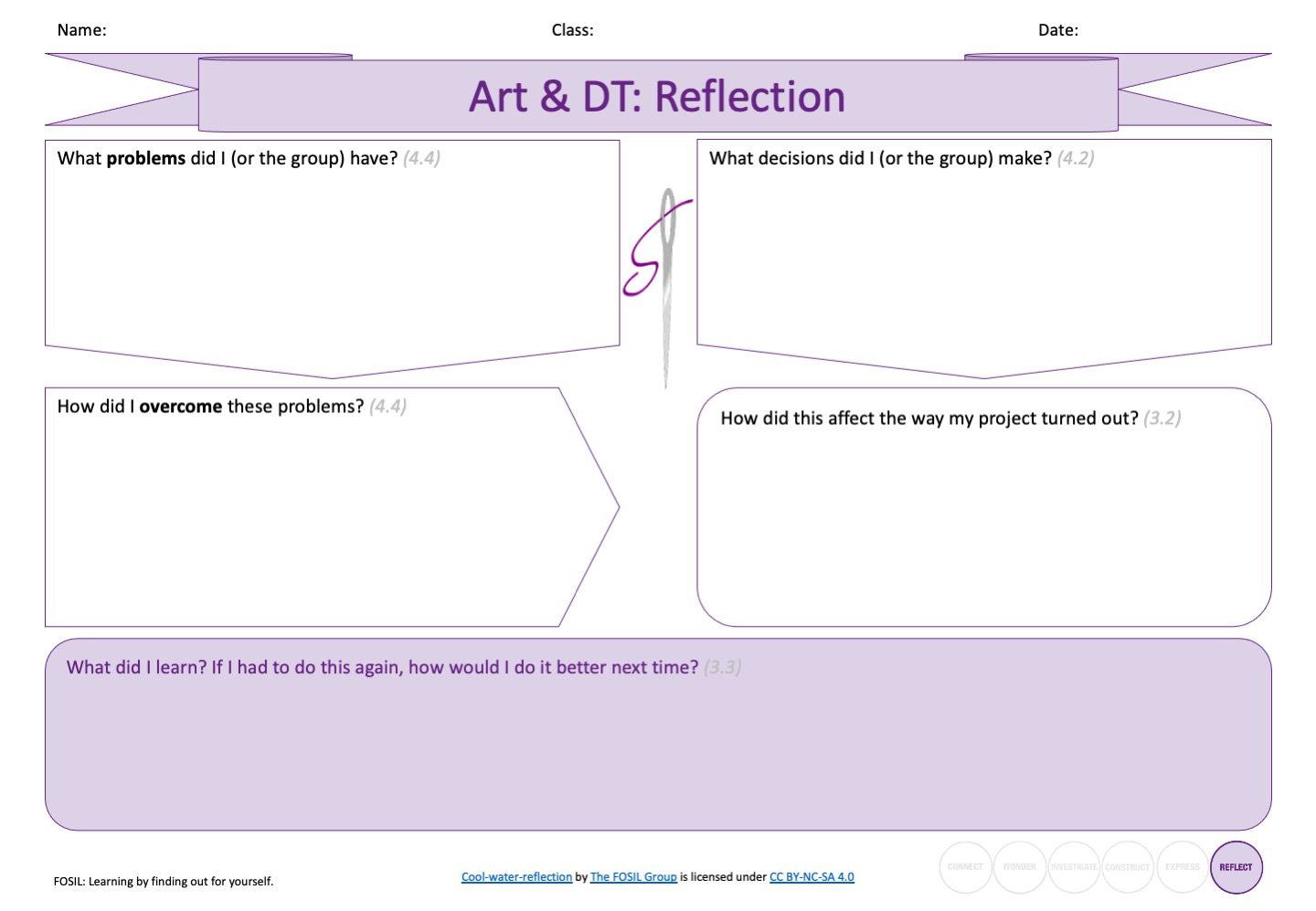
Over half-term, I reviewed all the work they had produced and made notes (in an Excel spreadsheet) of any gaps that particular students had, or sections they needed to improve. Then I MailMerged this into a single page Word document for each student (see example below). My spreadsheet means that I have a central record of how every student is getting on, but the MailMerge meant that I was then able to give each student their printed feedback. They then spent a lesson, with guidance from me and the English teacher, reviewing their work, filling in the gaps and improving it. The teachers both commented what a valuable exercise this was, as often (particularly at this age) when students have missed something they will just need to move on with the rest of the class. One of the teachers also mentioned how doing it this way really built the students’ independence, because it allowed them to see exactly what they needed to do and to work through it by themselves. Both classes had a very productive lesson, and there was a strong sense of pride in completing this stage of their projects well. This type of marking was very time-consuming (for 44 students), but I feel it was worth it to make sure they all knew what they needed to be working on individually.
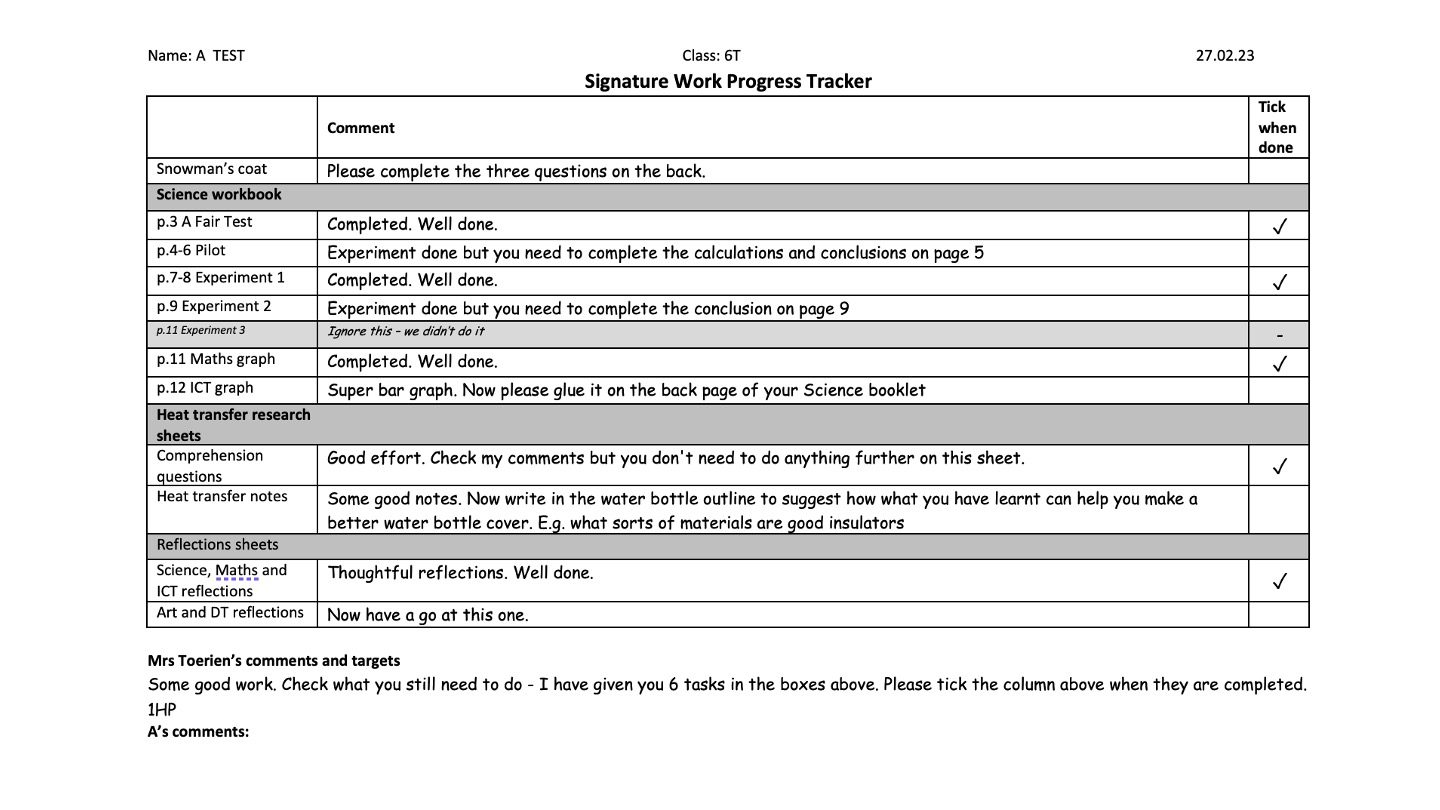 Next week we will be moving on to designing the campaign for reducing the use of single use plastics in the school – so back to Connect!17th May 2023 at 12:08 am #80413
Next week we will be moving on to designing the campaign for reducing the use of single use plastics in the school – so back to Connect!17th May 2023 at 12:08 am #80413The Campaigns
Note that in this and following posts I will share some photos of students and examples of their work. I do have permission from their parents for this. Please do not share such images on this forum without parental permission.
The final unit of this inquiry, after the Science experiments and the water bottle covers, was for Year 6 to design and run campaigns within the school, either to reduce the use of single-use plastics or to promote the drinking of healthy amounts of water (both original aims of the inquiry, tying in with the water bottle covers). When I first proposed this unit (which wasn’t part of the original plan) it was because I was concerned that the inquiry so far had not met these CREST criteria:
1.3 You have identified a range of approaches to the project
1.4 You have described your plan for the project and why you chose that approach
3.1 You have…explained implications for the wider world
Due to their age and unfamiliarity with the Science equipment, we did not give Y6 as much autonomy in the Science stage of the project as we might have done for Y7 so they needed a further opportunity to display their planning skills and project management skills.
However, what started as an attempt to make sure the criteria were fully met became a key part of the inquiry, and one of the most memorable for the students. We started by getting students into small groups to come up with ideas for different sorts of campaigns they could run. They then needed to consider the pros and cons of each and choose one to go ahead with.
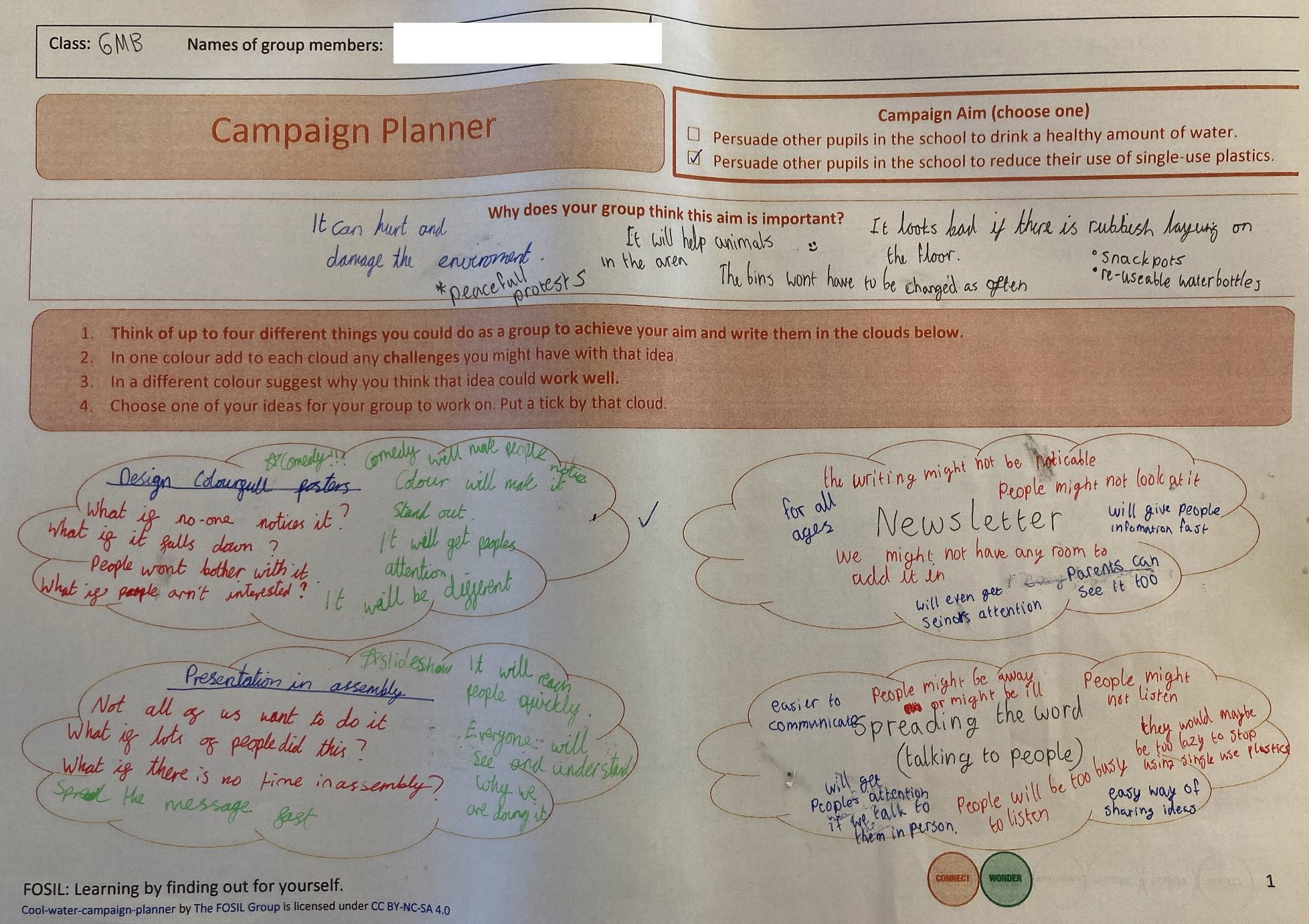
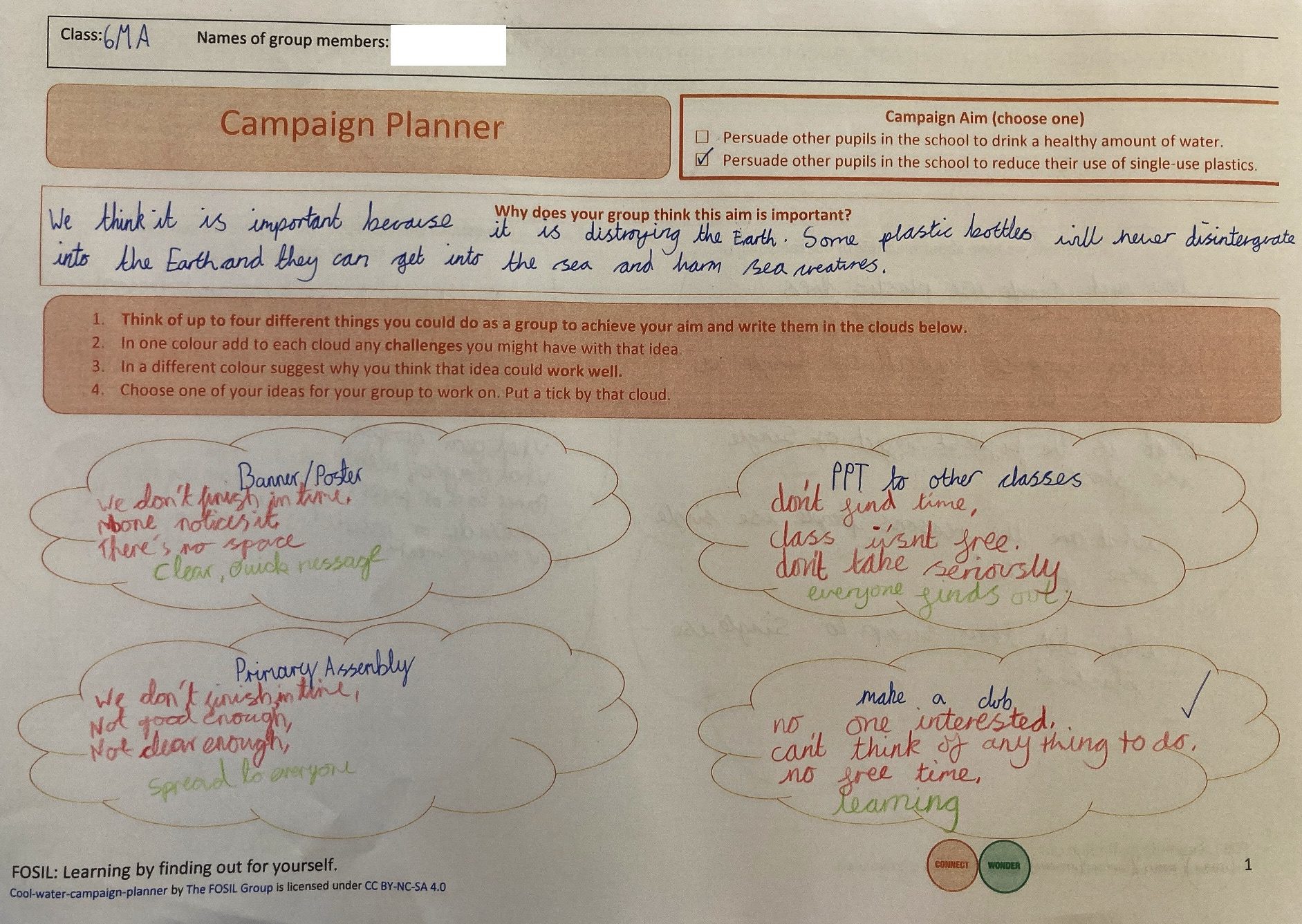
This led to a diverse range of authentic products with authentic audiences, and allowed students to choose products that they were excited about. One teacher commented to me at the end that she had tried getting students to do individual presentations to other classes in her subject, but a few of them found it so stressful that they wouldn’t come to school on the day of the presentations. We had no issues with this (even though some were understandably anxious), in part because the students worked in groups, but also because those who had great anxiety about presentations chose to express themselves in different ways.
In the end we had:
- Small groups of Year 6 students presenting during form period to each of Years 1 to 7, which was amazing for discussing the importance of considering the audience for a product. In the final practice to their own (Y6) classmates there were some very mature discussions about the level of text that would be appropriate on slides for younger students, and the amount of detail that might be necessary for older ones.
- One group presenting in whole school assembly (which is around 300 children aged 7 to 18 and their teachers)
- Posters aimed at different audiences
- An article for the school newsletter (which I also published on our LibGuide for them)
- A poster designed to be shared on social media, with a hyperlink to an online presentation
- A lunchtime ‘protest’ where a small group of students made placards to wear, chanted slogans they had made up (e.g. ‘sea grass not sea glass’) and walked around at lunchtime engaging with their peers about their message.
- A small group set up and ran a lunchtime club for younger students aimed at reducing plastic waste, which will run for the whole term.

It was amazing how an authentic product and audience really helped the students to take themselves and their work seriously. I spent a number of lunchtimes rehearsing presentations with small groups who were keen to refine and improve them before presenting to their target audience. I think it was probably the first time ever for some of the less able and engaged students that they had volunteered to stay in at lunchtime to get feedback on their work and improve it! The assembly group were even prepared to stay after school to rehearse because it was the only time that we could access the main hall to practise with the microphones.
While the campaigns were a great success, there are three things in particular I would improve for next year.
- We spent two lessons (of about an hour each) working with books and print articles to gather information in investigative journals to inform the campaigns before they started work on the campaigns themselves. As soon as they got access to computers almost every group abandoned their print notes and started again, either just using whatever information was in their heads or pulling a few facts from the internet to accompany whatever images they found. I was frustrated that some of the campaigns were fairly information-light, given how much time they had spent reading. Next year I will design a more tailored note-taking resource to help them select key information for their campaign in different categories (e.g. What is the problem? Why should I care? What change do I need to make? How can I make that change?) and then suggest they design their campaign around those categories.
- I did discuss presentation and poster design with the students, and provided some simple advice (see graphic organisers below), but the computers were a real distraction for the poster group. The presentation groups generally did quite well at making simple and effective, non-flashy PPTs. With coaching they reduced the text on these to appropriate levels and produced scripts in the notes field. With more time we would then have looked at transferring these to cue cards rather than just printing them off. I had anticipated that the poster groups might want to print off text and images but expected them to choose to stick these onto larger more colourful sheets. In reality most groups chose to work entirely on the computer, but they lacked the graphic design skills to produce really effective and eye catching printed posters. Next year I will produce some samples for the group to critique, and provide plenty of art and craft materials to encourage them to use mixed media rather than just stick to the computers.
- Both groups struggled to reference images – and, while it was a good opportunity to introduce them to reverse image searching tools like Tin Eye, next year I will be much more explicit and insistent about referencing images right from the start.
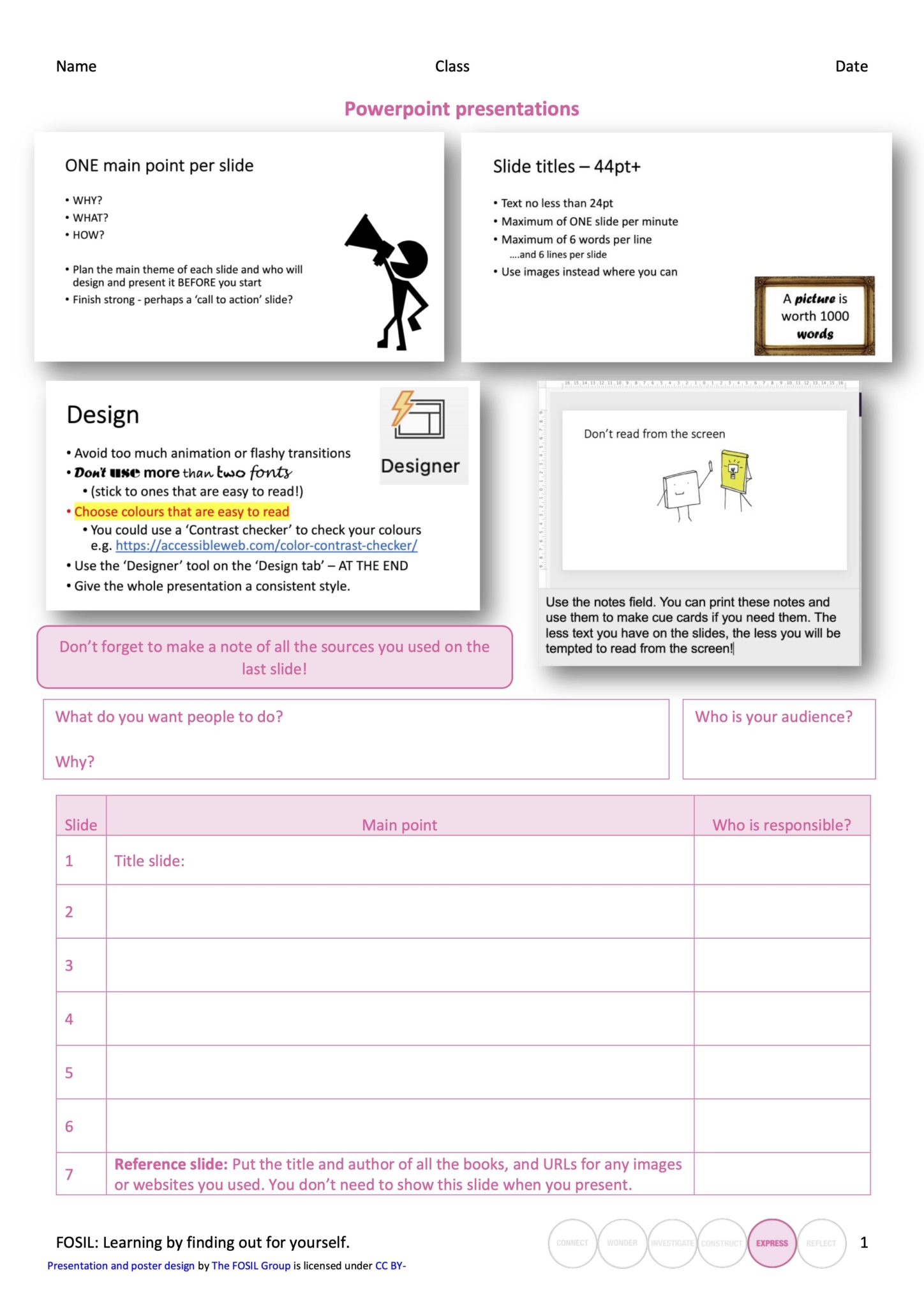

I will upload editable copies of the graphic organisers shown in this post to the Resources section over the next few days, and link them into this post.
Although I do have improvements I would make next year, I was really pleased with the outcomes of the campaigns unit and felt that the students learnt a fair bit about their topics and about creating authentic products that they were proud of, and also really developed their ICT skills (as we delivered a part of this unit through ICT lessons and focussed on using Office 365 packages collaboratively to create effective presentations and posters).
27th January 2025 at 9:11 pm #85325I will post more as we move through the inquiry, but as we enter the fourth year of the Y6 Signature Work I can really see the benefits of running and refining an inquiry over a number of years. Key developments this year:
- I’ve set up a Team to manage all our communications (and saved copies of all the files into the associated SharePoint). With ten members of staff involved across about six months, this has helped to keep everyone in step.
- We added an introductory Theology lesson (we are a Catholic School and our Y6 do Catholic Social Teaching in the Christmas term, which fits in perfectly with the campaigns). We looked at how last year’s campaigns fitted in with Catholic Social Teaching and my plan is to incorporate some of this into this year’s campaign planning. You could do a similar thing with citizenship, or with a different Religious Studies curriculum. I have also mentioned it to the Geography teacher who is going to mention Responsible Production and Consumption as part of her unit on Everest.
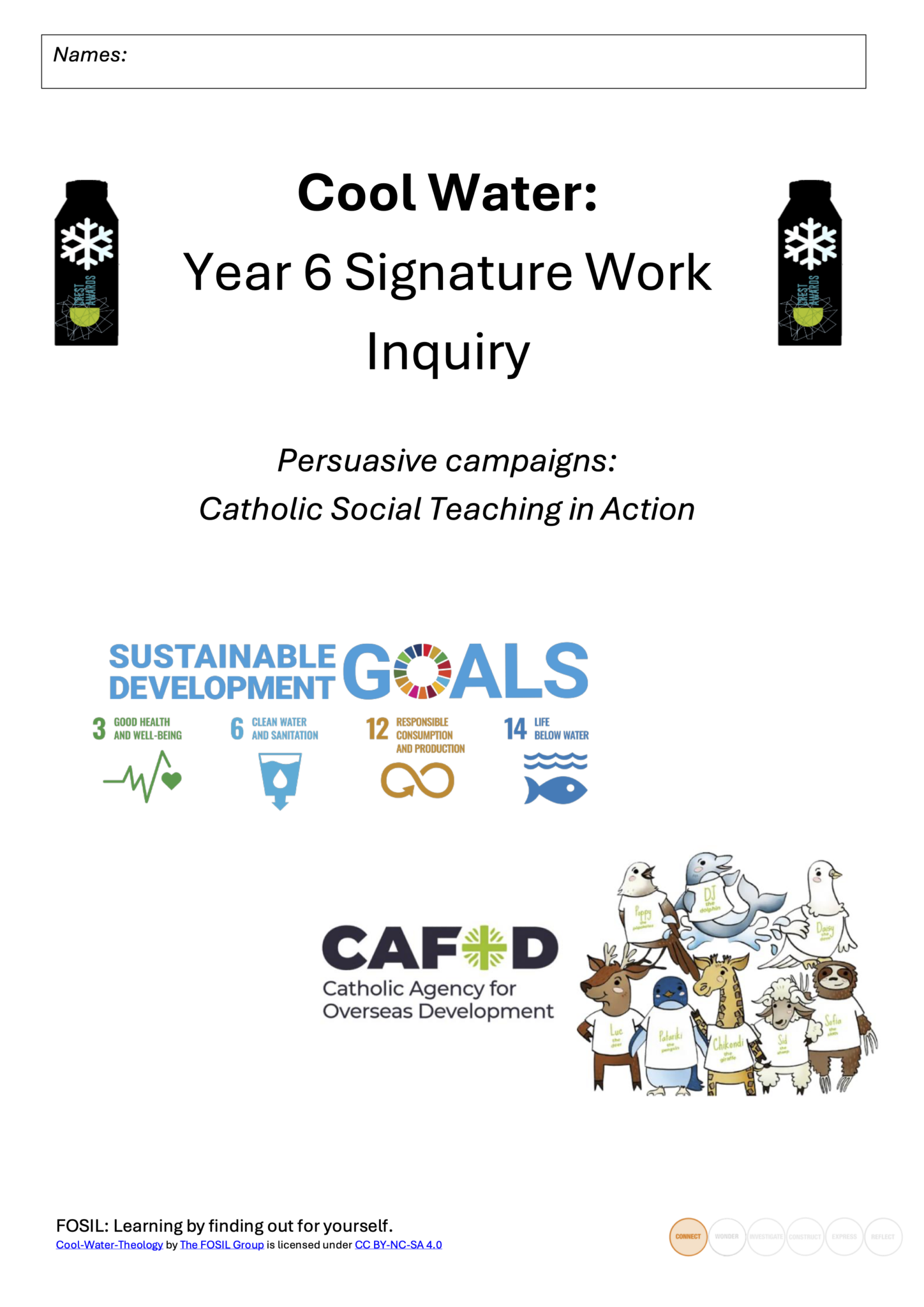
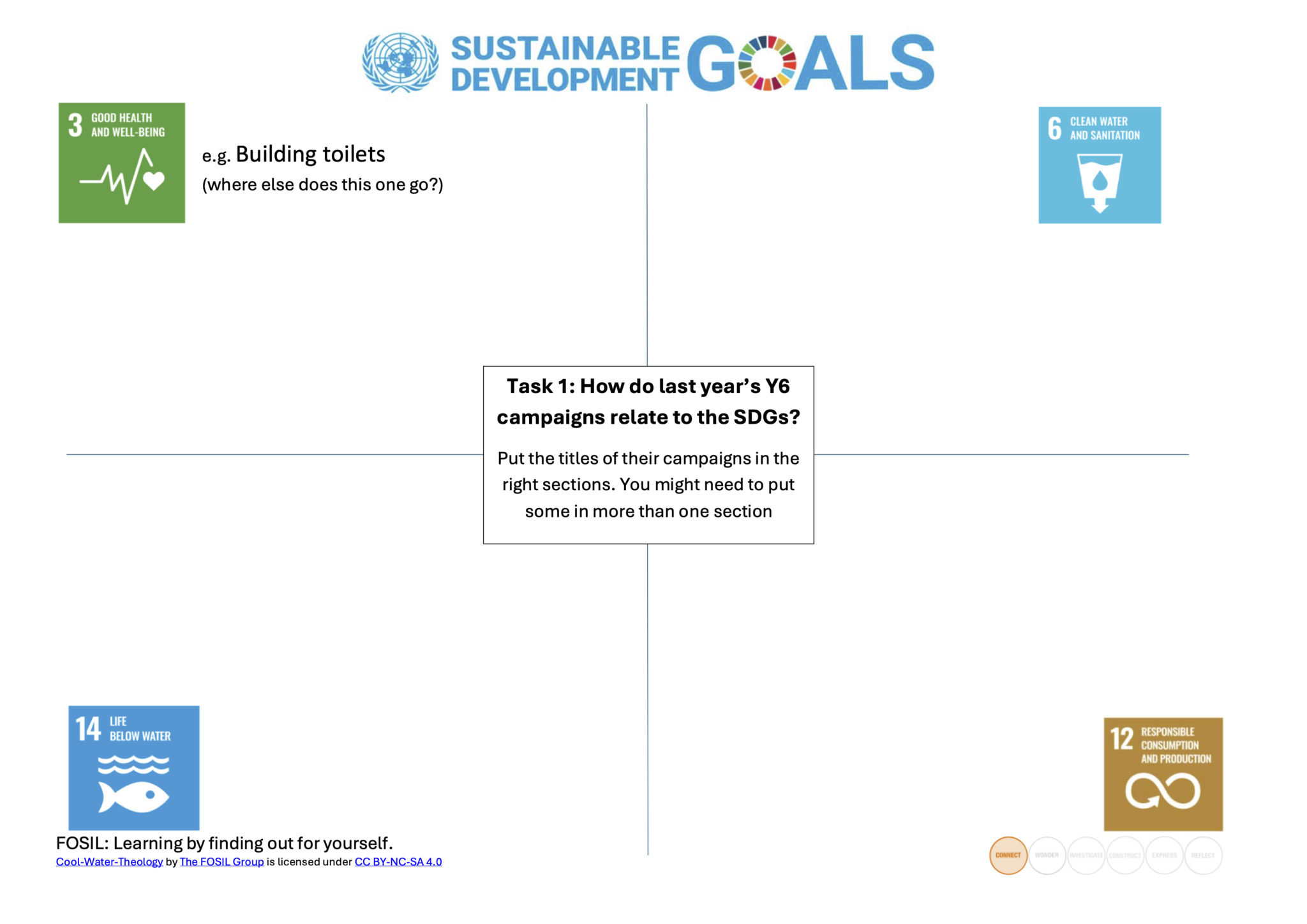
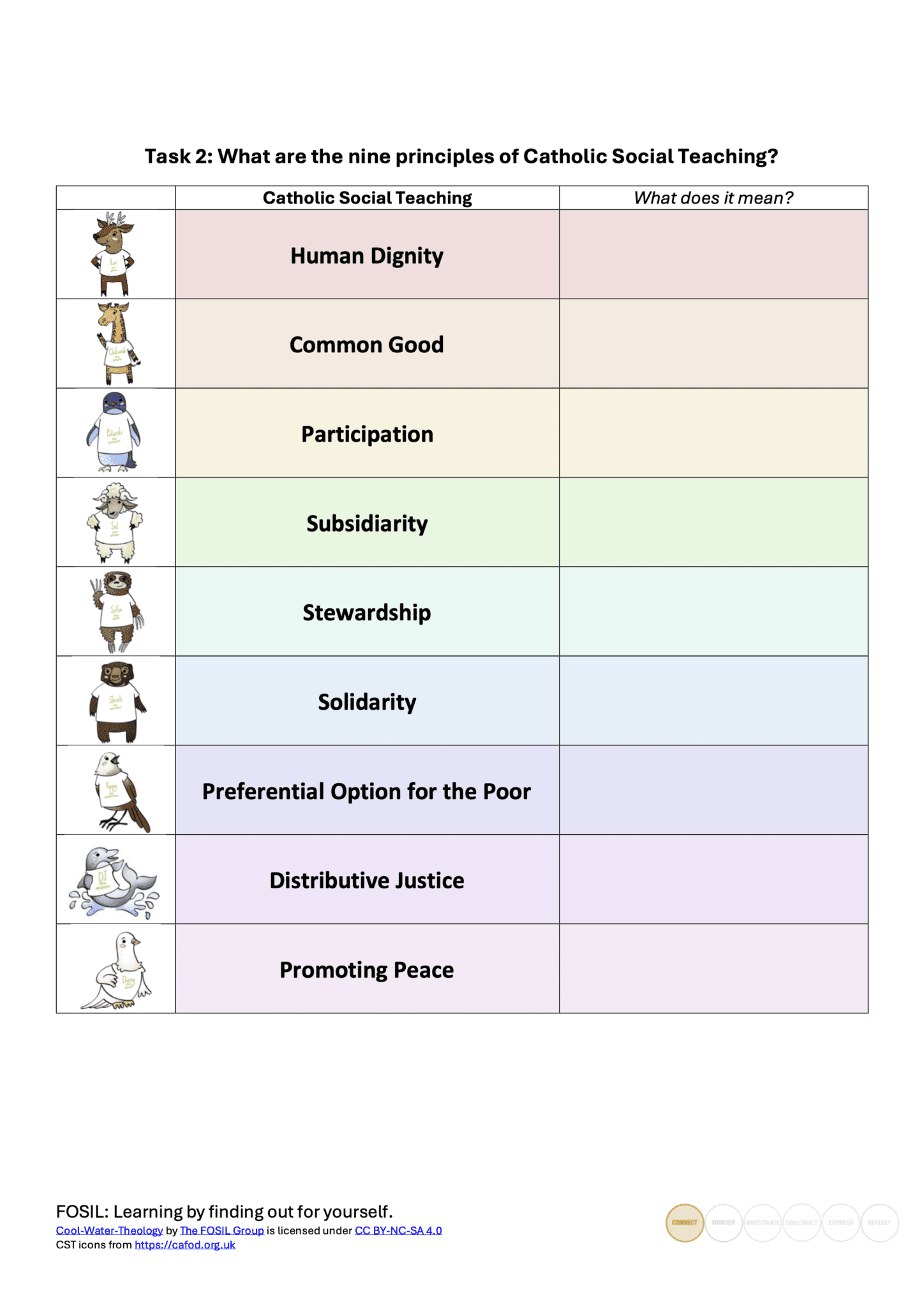
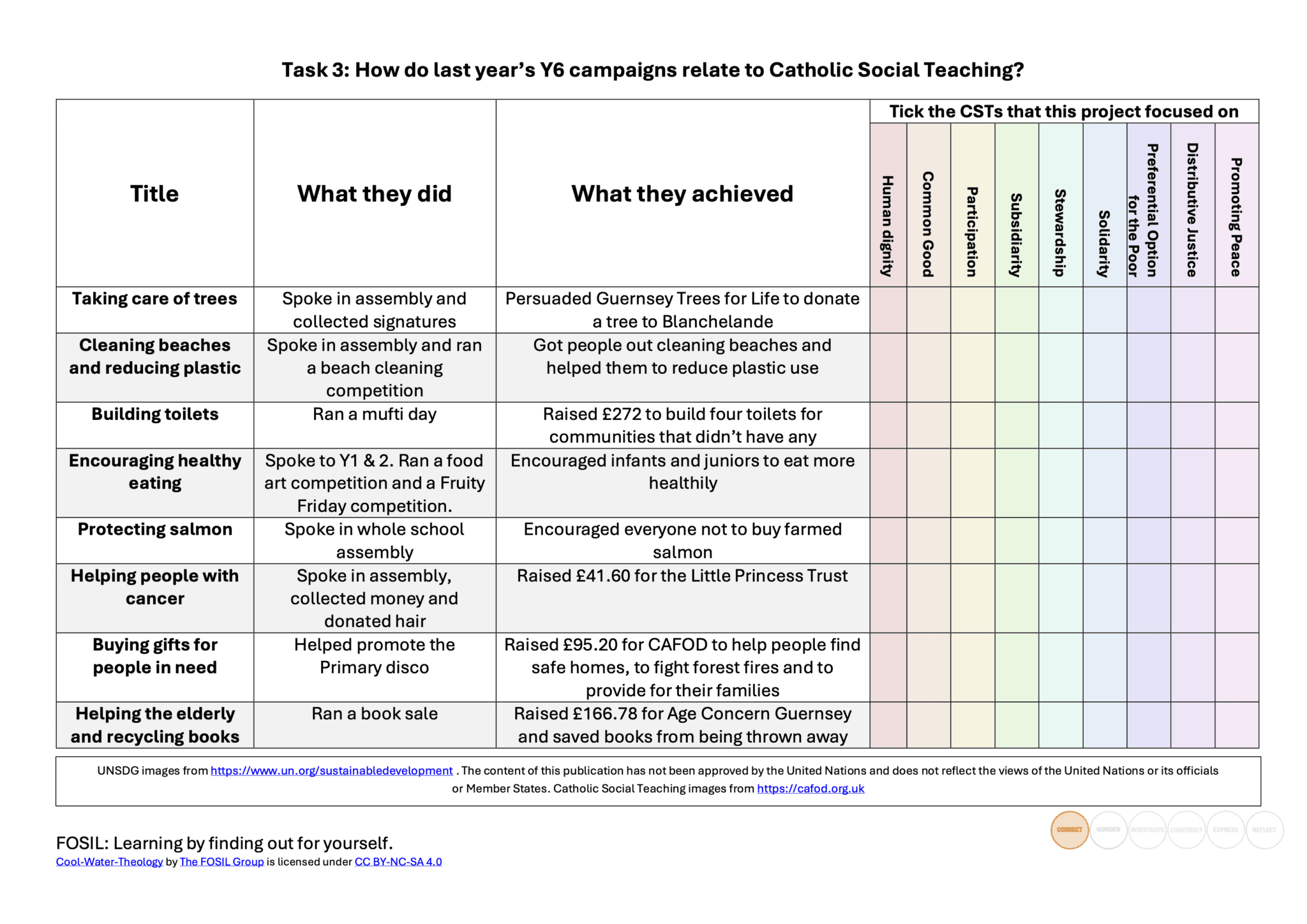
- I am in the process of inviting local charities in to a marketplace event to help Y6 choose which causes thye want to support after half term. I am really excited about this development, which is a natural extension of some of the connections last year’s groups made with some local charities.
There have also been a couple of key changes to the structure. I was asked to move the spine of the inquiry to ICT rather than English because of pressure on the English curriculum time, but with some additional lessons in English at important points when English skills are the focus. When we were in the process of developing the project I taught all of the spine lessons (in part because I hadn’t yet developed it fully enough to confidently explain to someone else where it was going), but this year I have been able to hand control of certain parts of the spine over to one of the English teachers who is also the ICT teacher. We still team teach these lessons, but he takes the lead now.
It is such a priviledge to work with talented colleagues like this, and handing these lessons over has reminded me how important the subject specialist is in inquiry. As a Y6 English specialist, he has done a much better job that I did of teaching the skills of understanding and interrogating a non-fiction text at the right level for this age-group, and I think this year’s group understand the Science they have learnt from these texts better than last year’s (even though I am a Science specialist). Although we have continued to use all the materials I developed over the last few years, his understanding of their reading ability and what kind of scaffolding they need to access these kind of texts has really brought this part of the unit to life.
As the Science teachers are more used to the unit I have also felt able to let go a bit there (which has helped as one group’s Science lessons are timetabled at the same time as the other’s ICT lessons and I can’t be in both places at once!), although I did cover one of these lessons last week when the teacher couldn’t be there and I pop in when I can to lemd a hand.
The water bottle covers are evolving in Art (they are using some screen printing techiques this year), and I’m looking forward to dropping in to help out a bit with needle threading for some of the sewing lessons this week.
Although I do still co-ordinate the inquiry and play an important part in helping it to run smoothly, every year it is more of a community effort – which means the students benefit from a wide range of expertise, and as staff get more comfortable with it, inquiry ideas and practices are more likely to seep out into their other teaching. It also means that, although I am still an important part of the inquiry team, it does not absorb all my attention in quite the same way as it did in previous years, leaving me time to work with other teachers on other inquiries (e.g. Y8 Theology, Y4&5 Geography).
This intense focus on flagship inquiries (involving communities of colleagues) which, once set up and running, require decreasing amounts of attention from me every year, allowing me to turn my attention to new projects, possibly with different colleagues, feels like a sustainable model for inquiry growth within our school.
27th January 2025 at 9:28 pm #85330P.S. I did ask Dorling Kindersley whether we could share the version of the English booklet (Central Inquiry Journal) with the single double page spread from their book Dorling Kindersley (2018) How Science Works. p.118-9 and unfortunately they said no because it would be freely available to anyone, rather than behind a paywall. Even though is is just two pages of a seven year old book.
Anna Claybourne (author of Claybourne, A. (2013) My First Book of Science. P.44-5) said she would happily give permission to use her work if she held the copyright, but she thought we would need the publisher’s permission too. Unfortunately the original publisher no longer exists and I can’t work out who they might have sold the rights to…
So the upshot is that I have had to remove the comprehension texts from the forum uploads and just leave the questions. If you want to reconstruct a similar journal you would need to use texts that your school owns, which can then be copied under fair use copyright.
29th January 2025 at 10:49 am #85367I have been involved in the Year 6 Signature work since its conception. We are now in the fourth year and during this time the project has evolved. This has resulted in more teachers taking on the responsibility for teaching their part of the curriculum within the project, for example, the English teachers with their expertise taking on the teaching of reading non-fiction texts. The project has also helped children clearly understand the links between the different aspects of the curriculum, showing them how intertwined Science, Design Technology, Maths, English and ICT are and that the skills are transferrable. Finally, the project has helped our children see the possibilities the project has on the wider world and how they can make a positive impact on helping to solve global issues.
-
AuthorPosts
- You must be logged in to reply to this topic.


